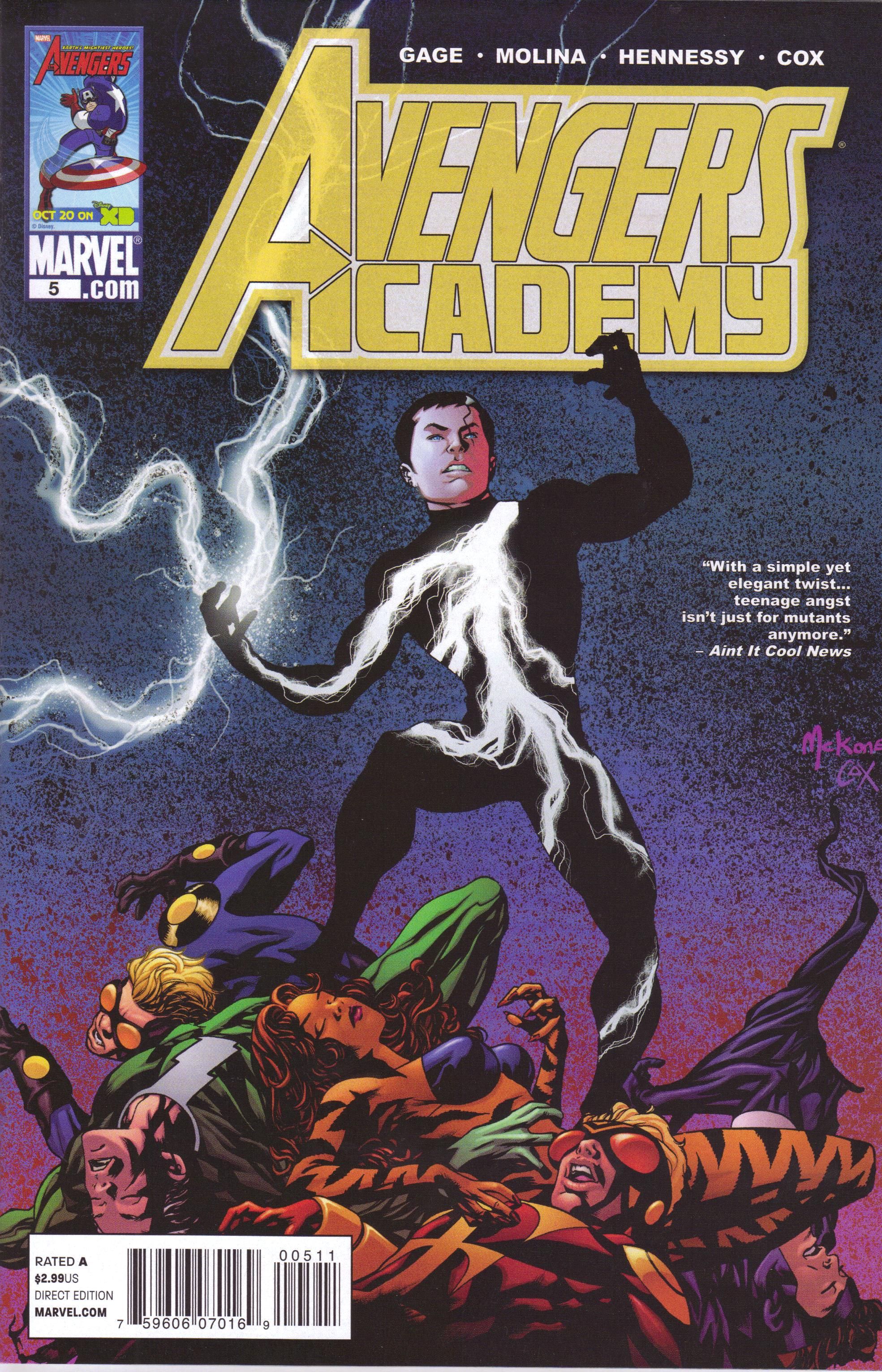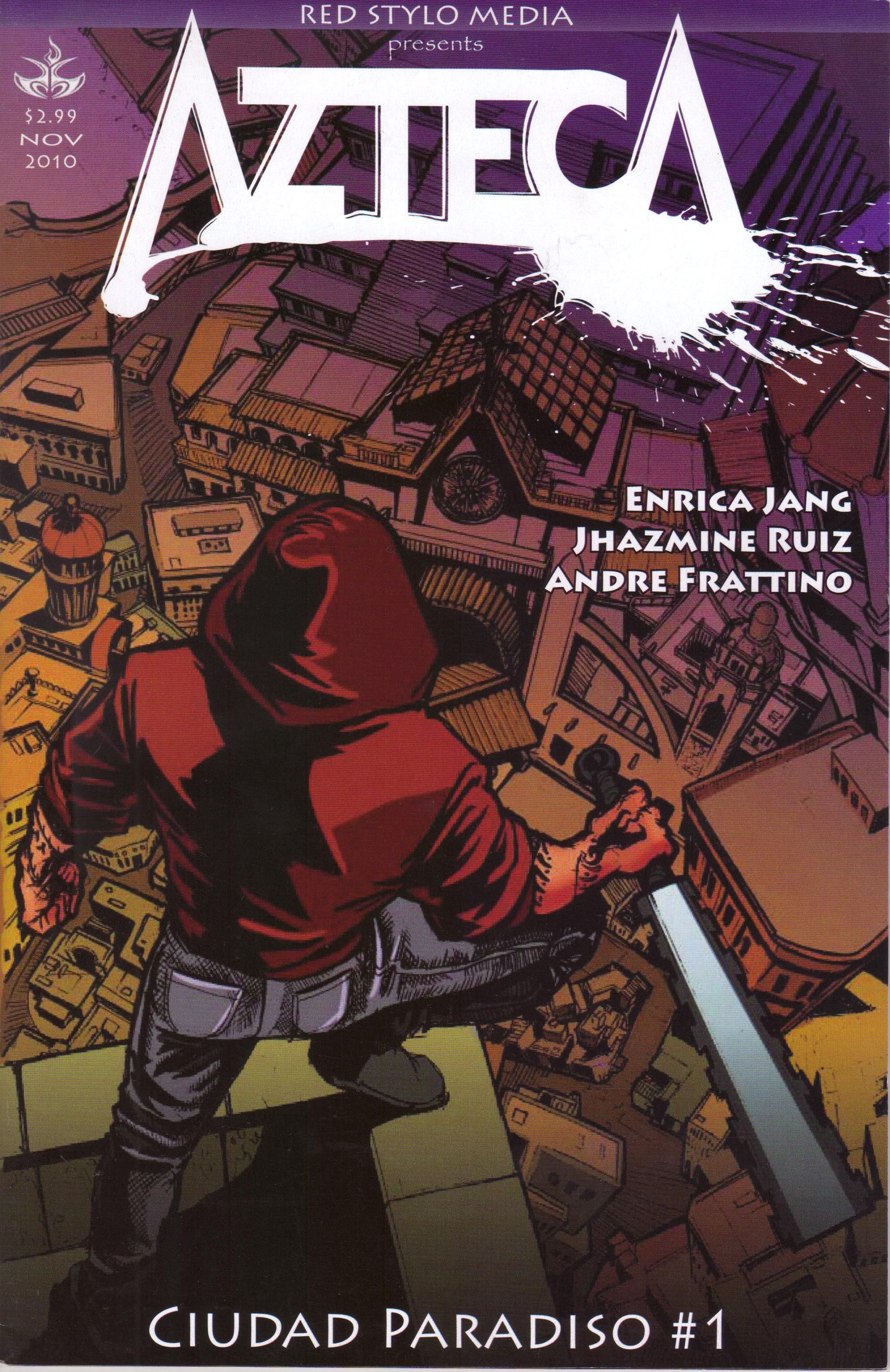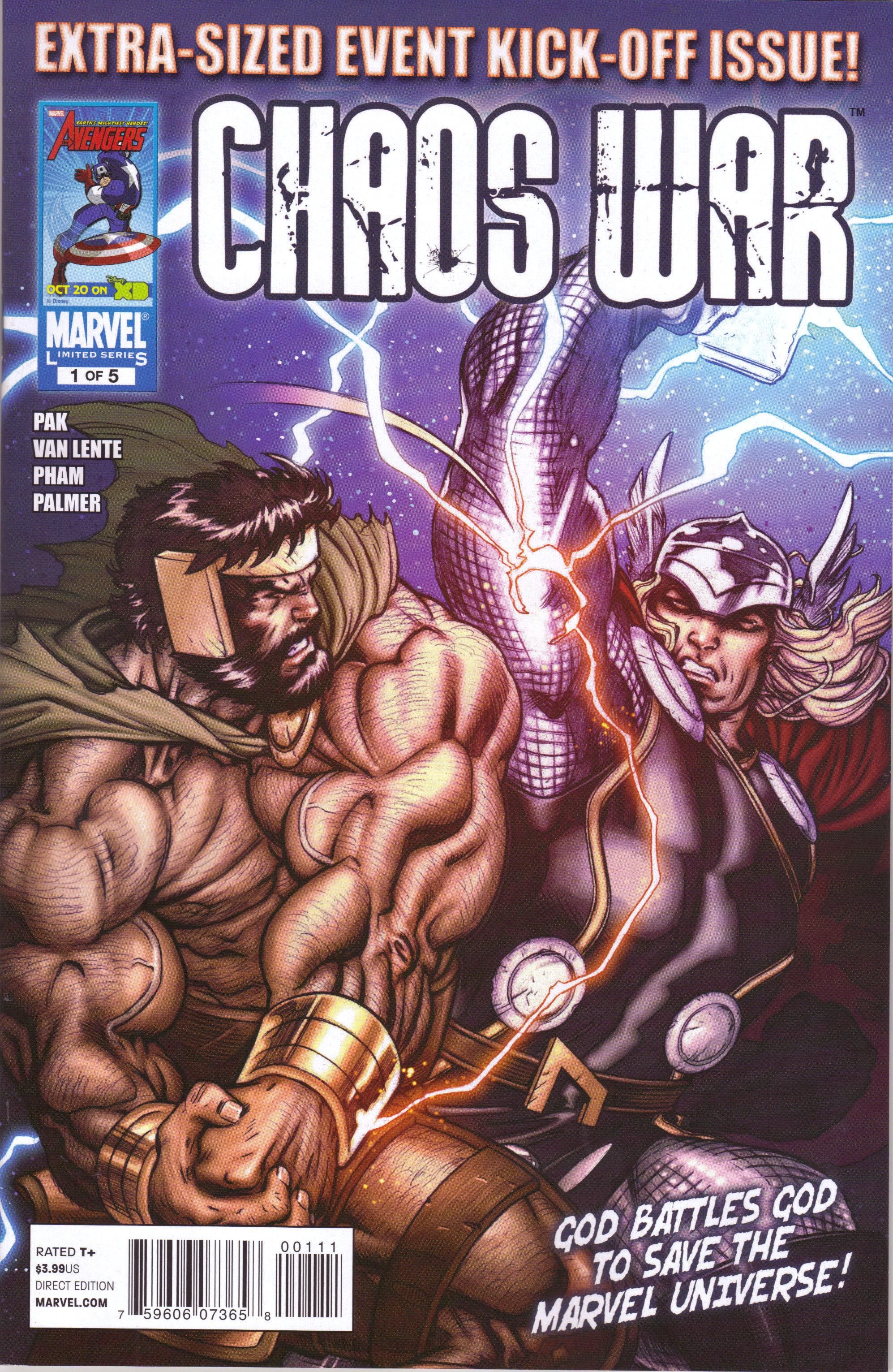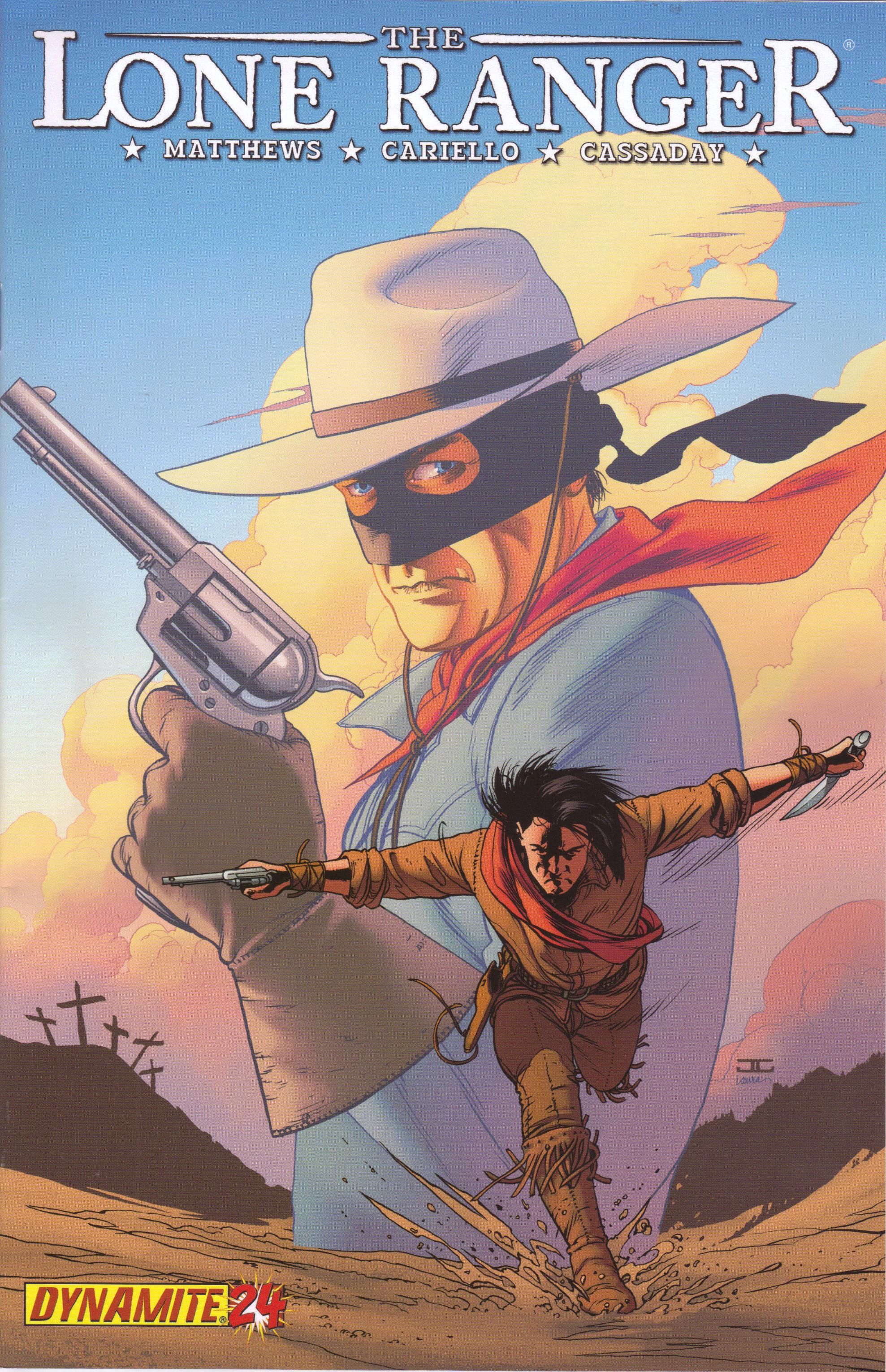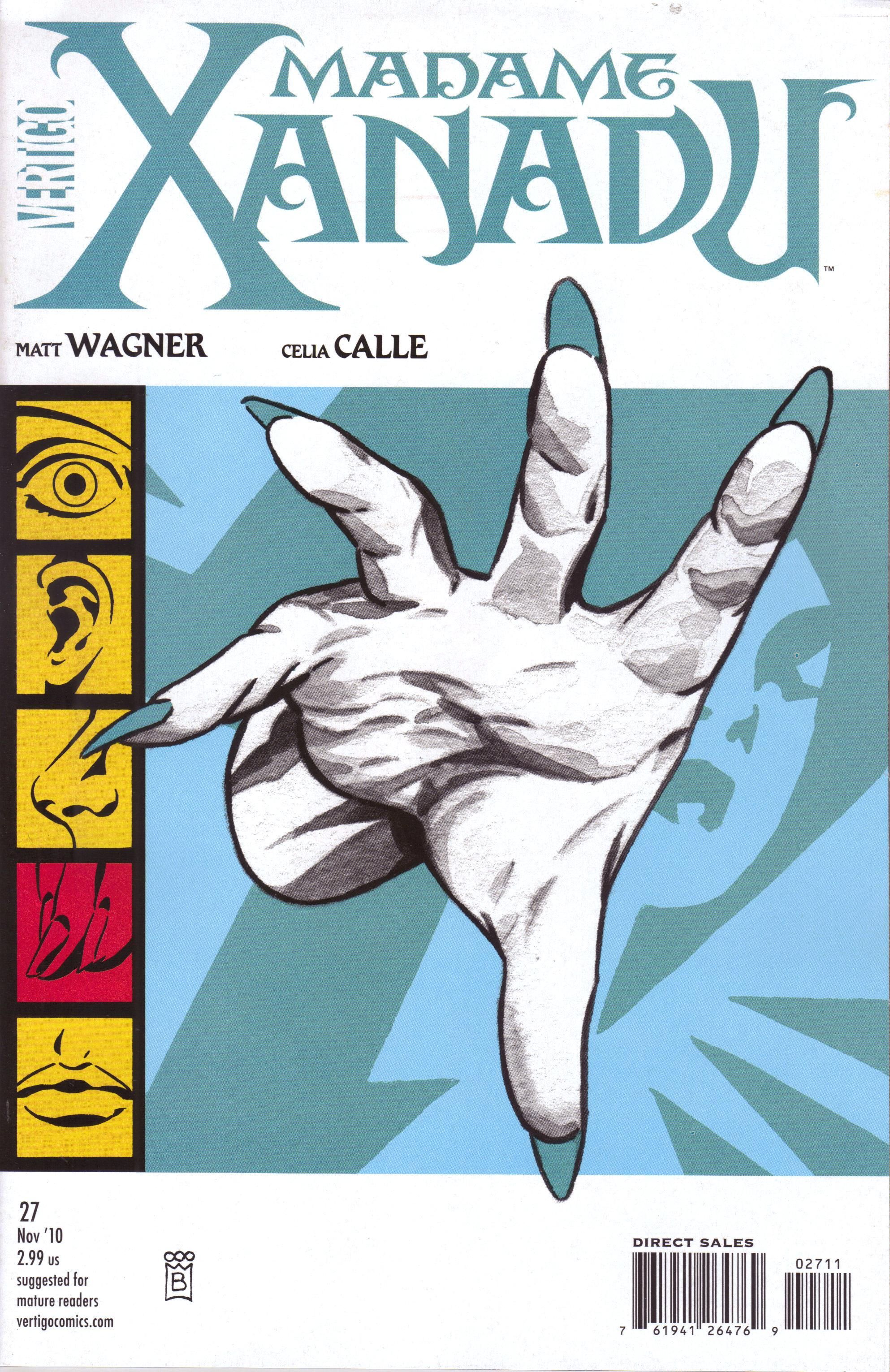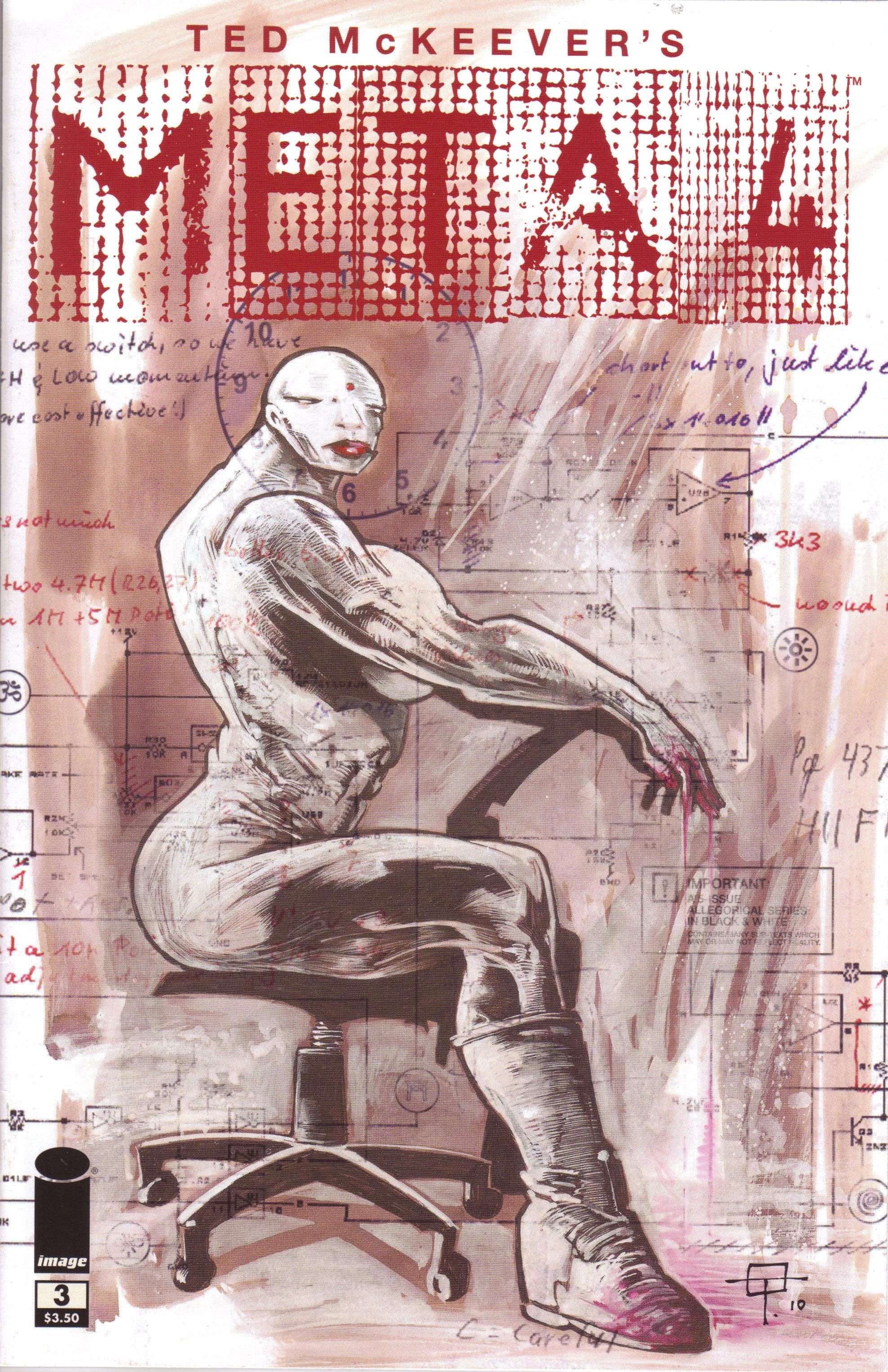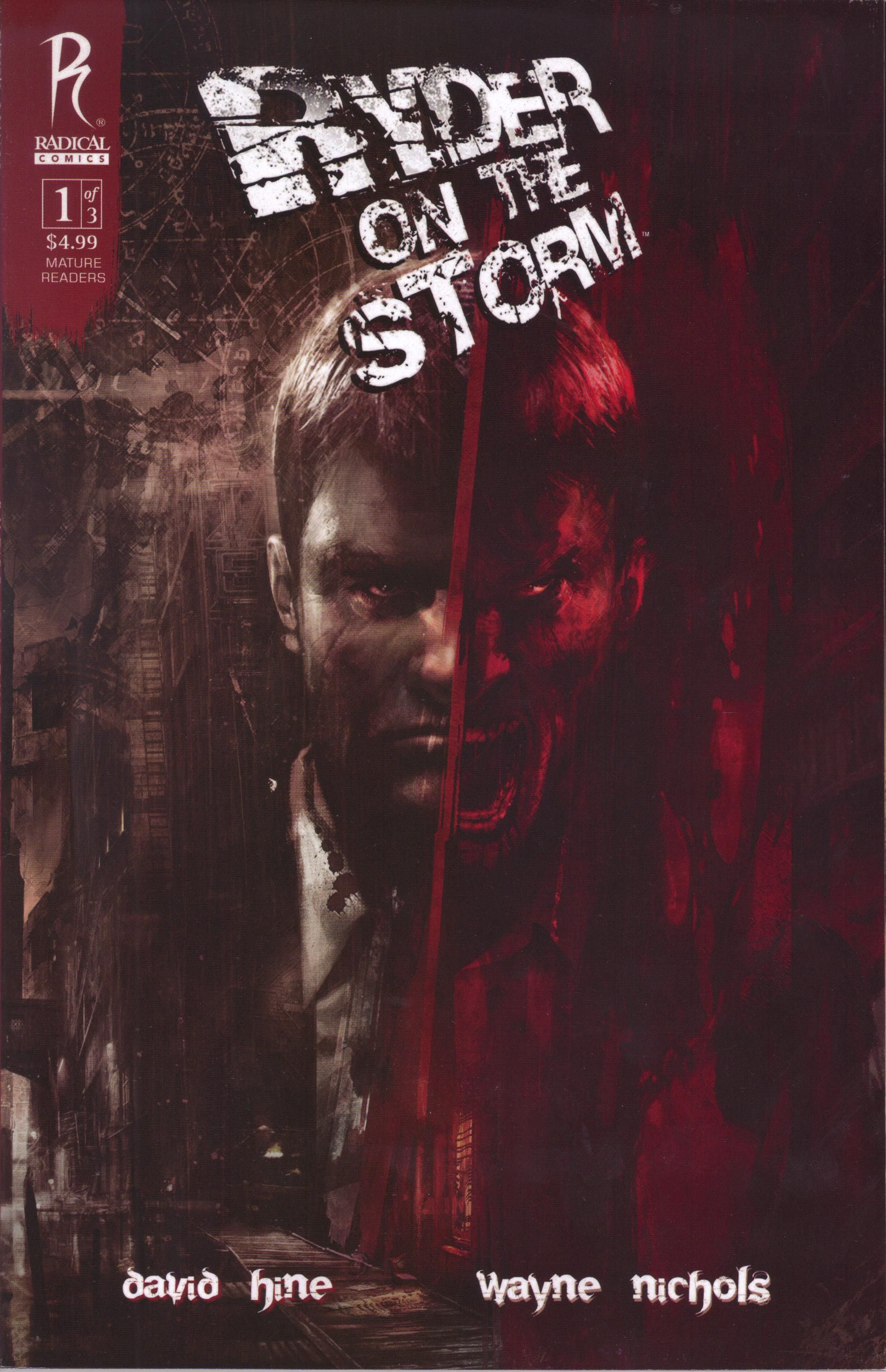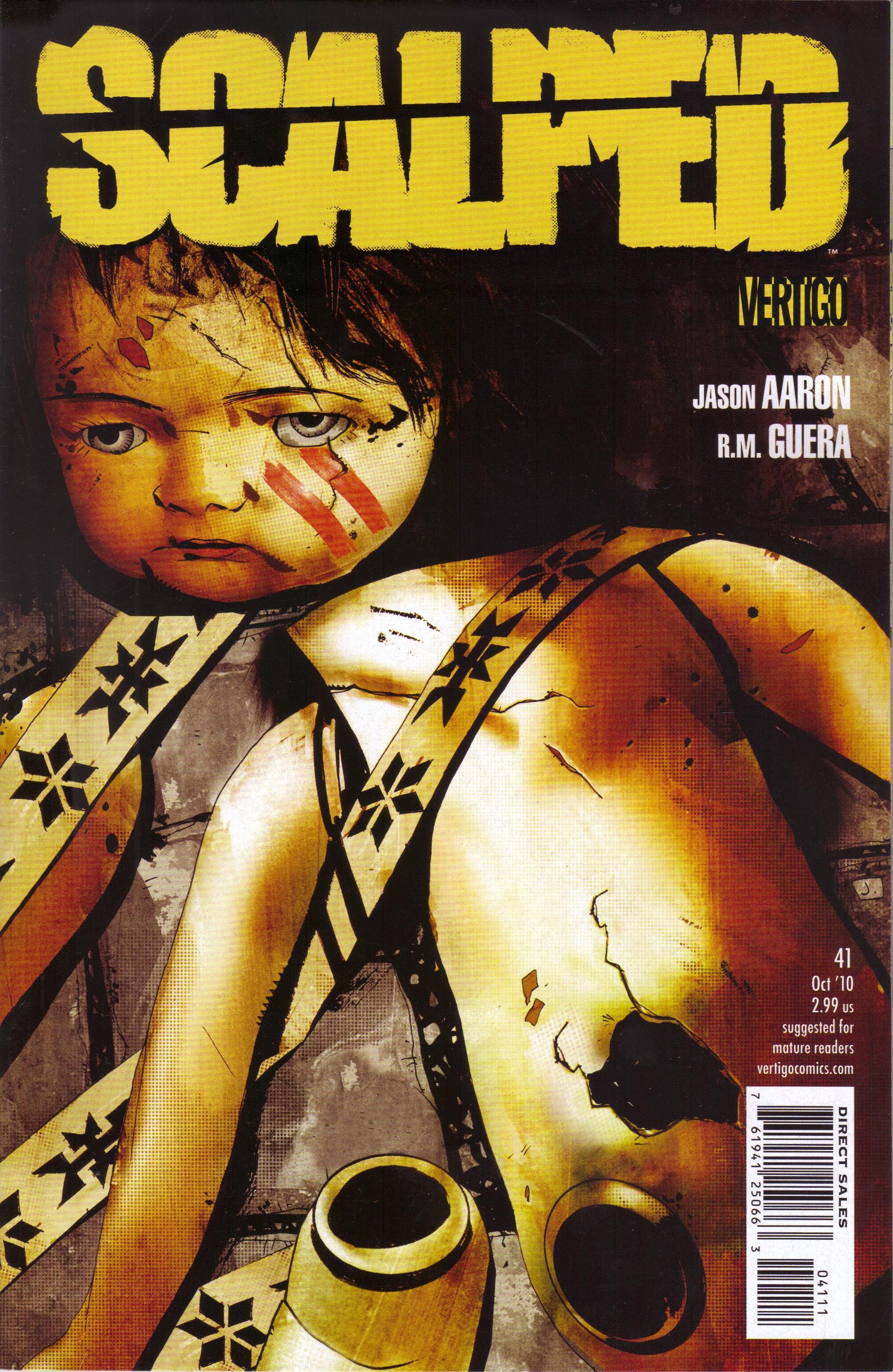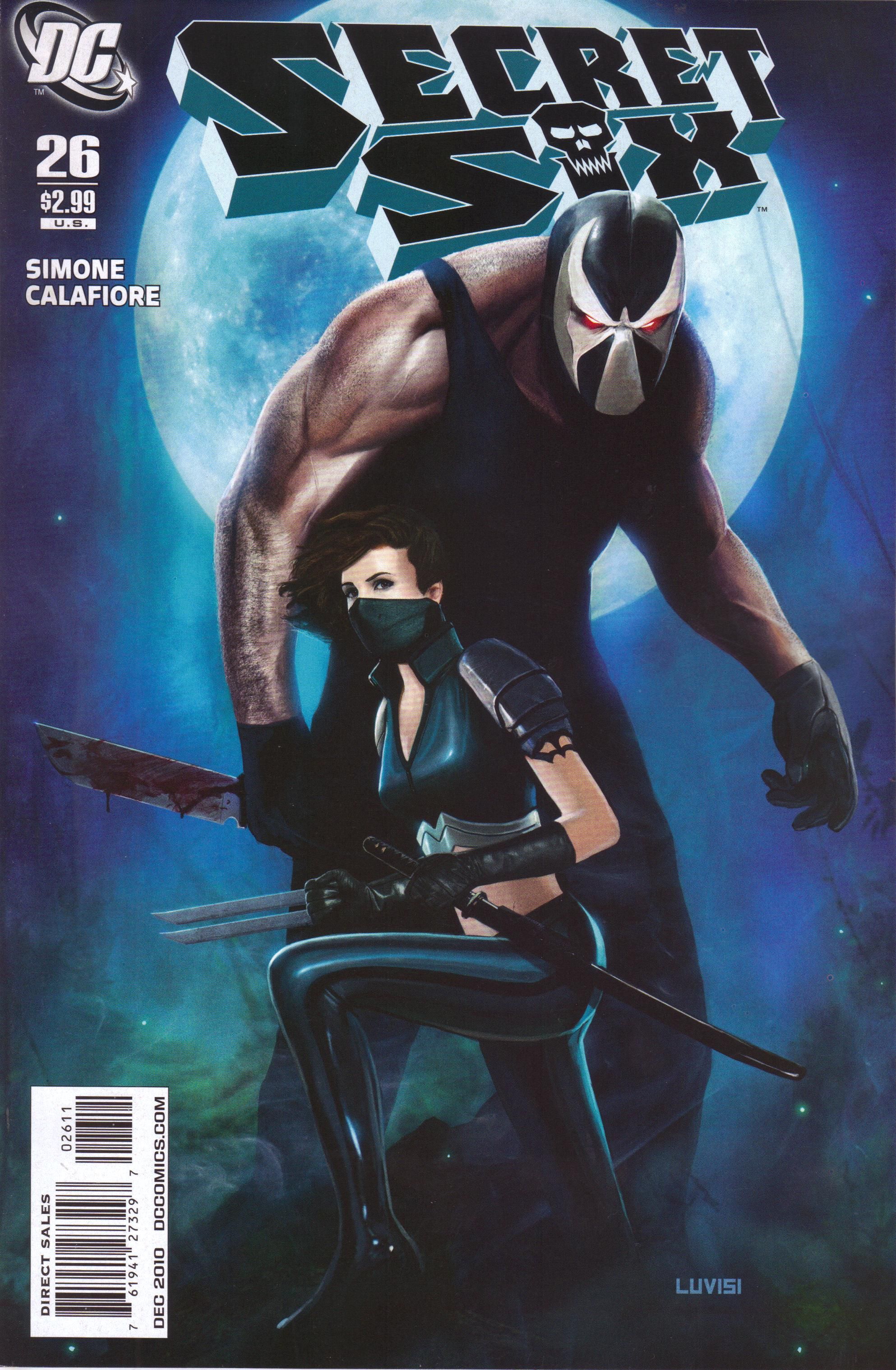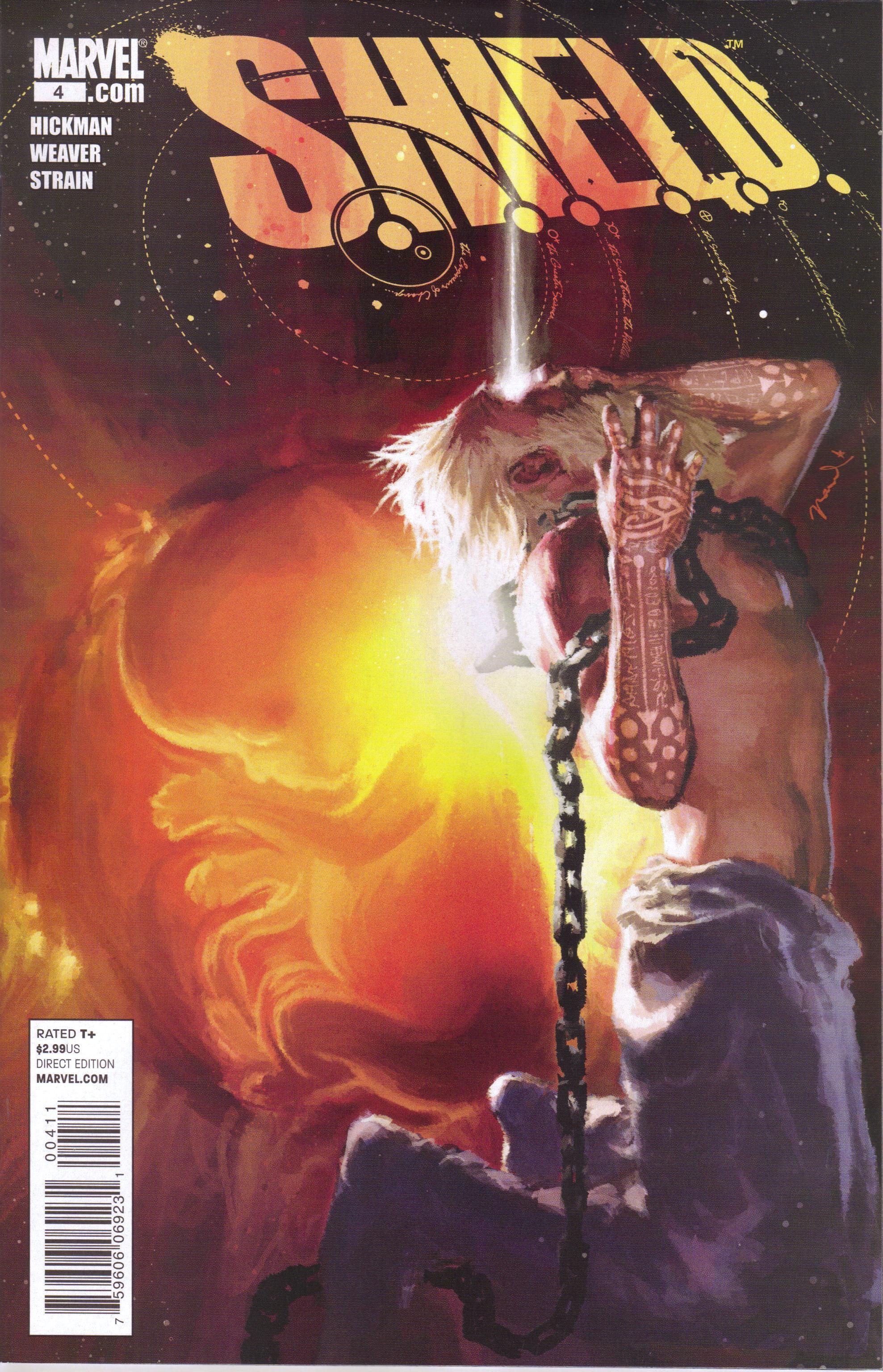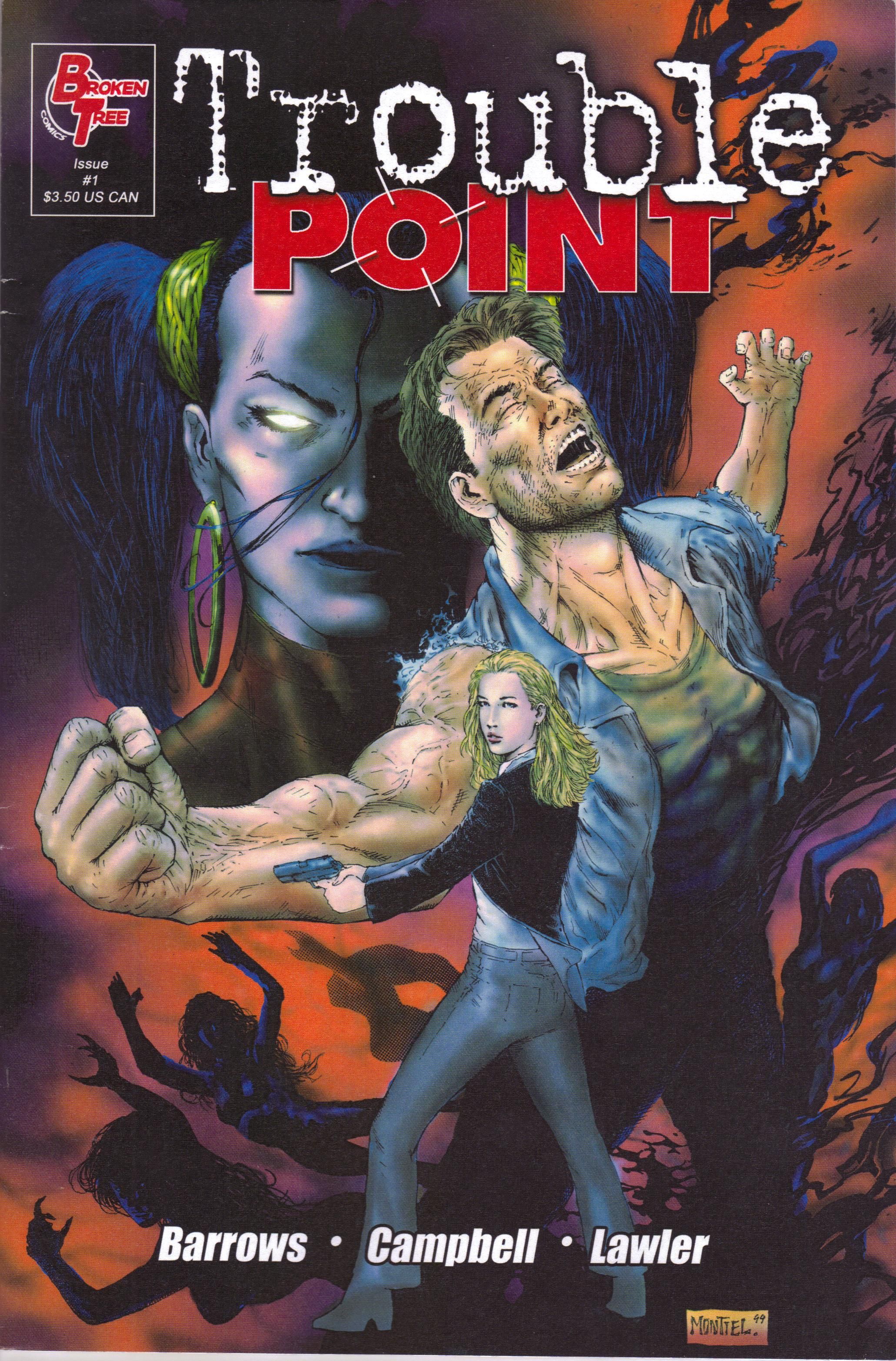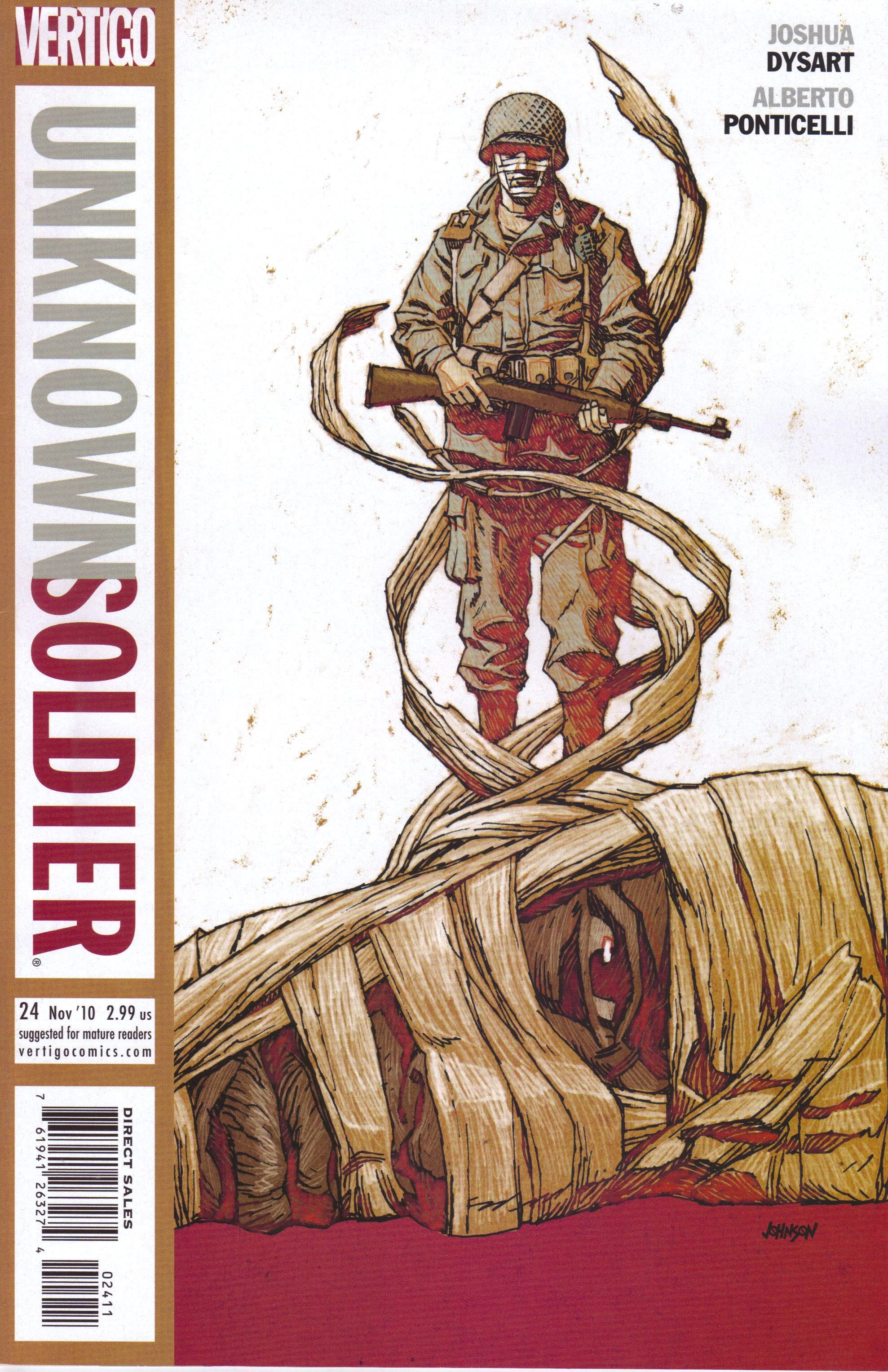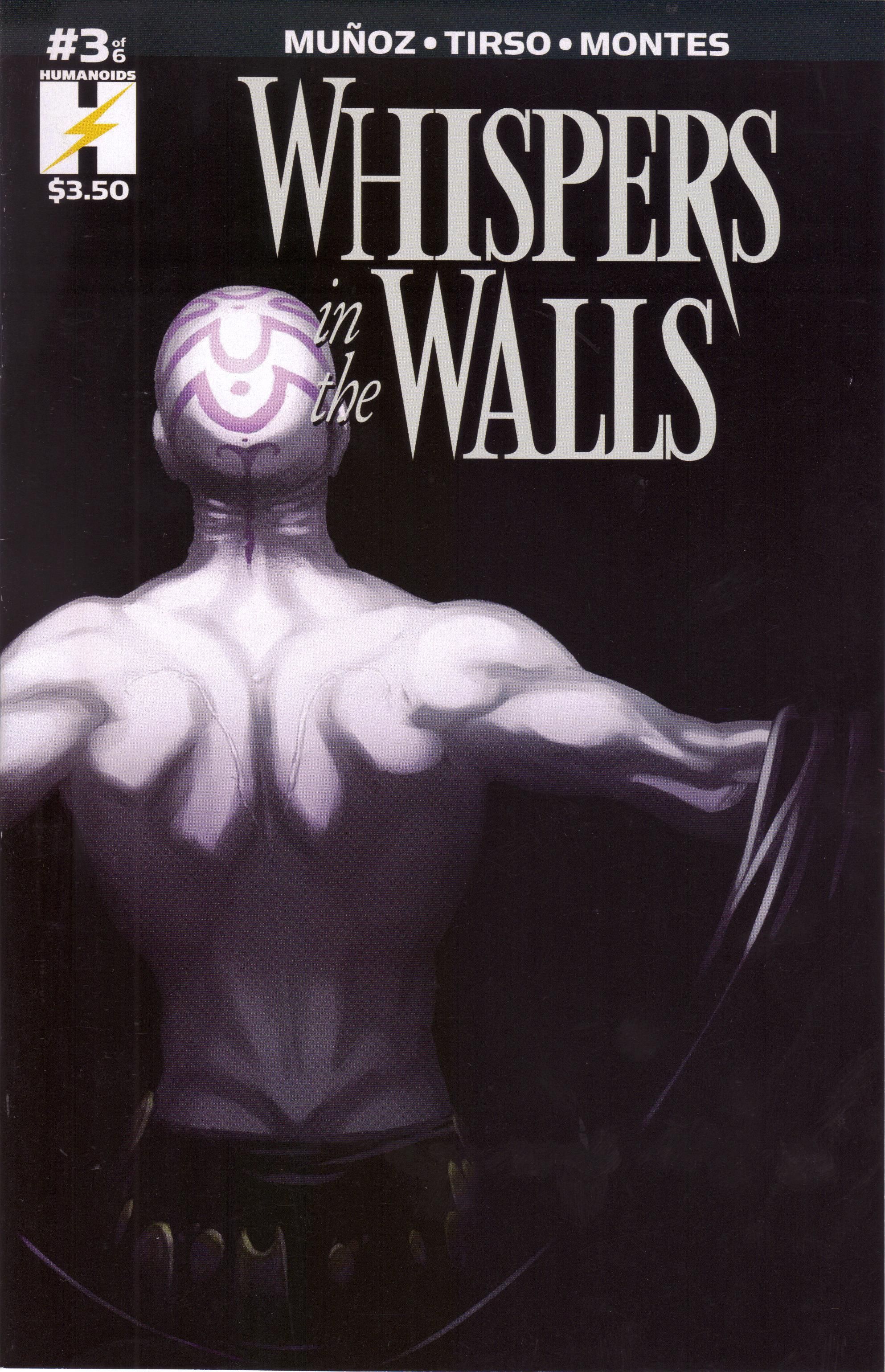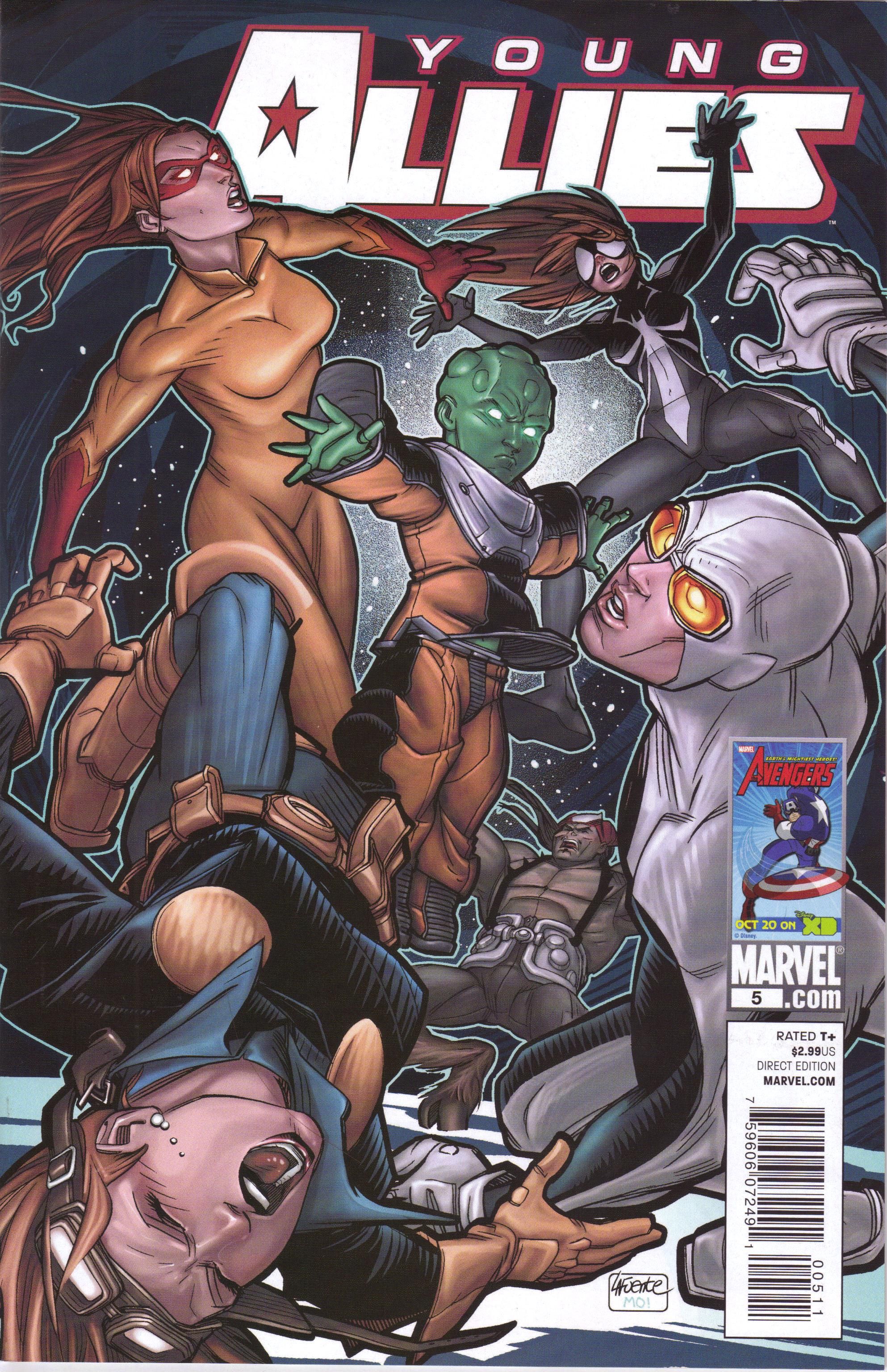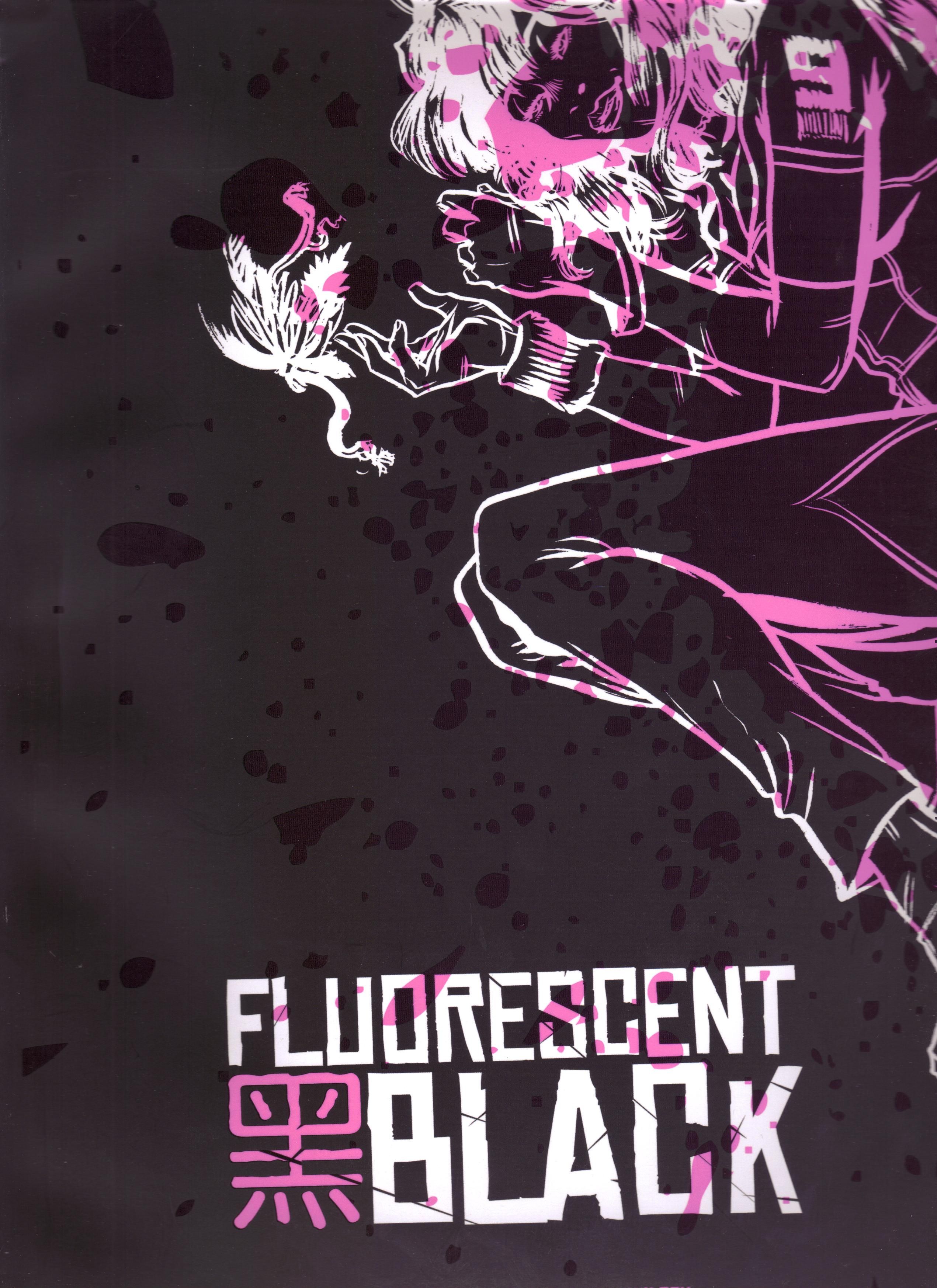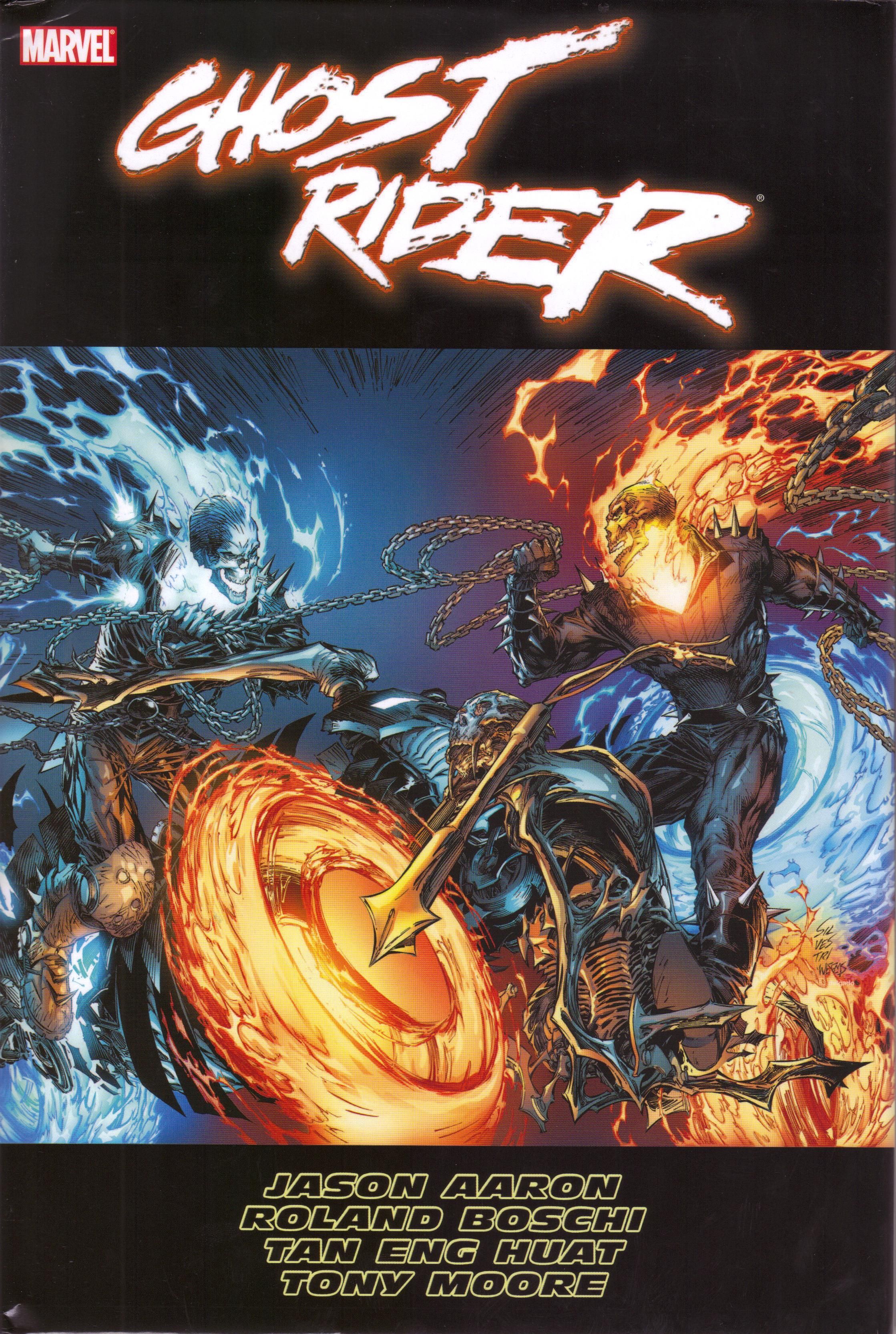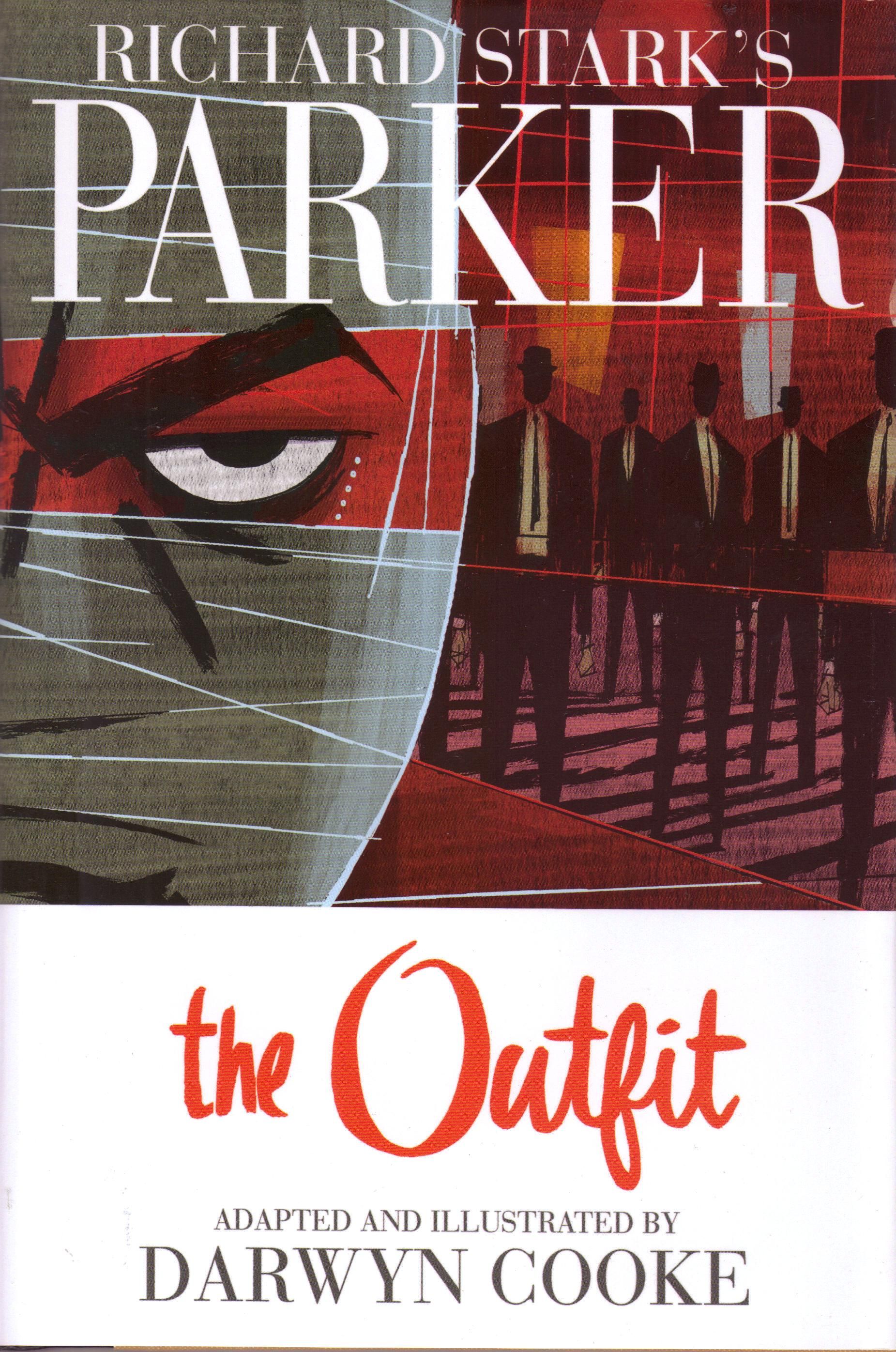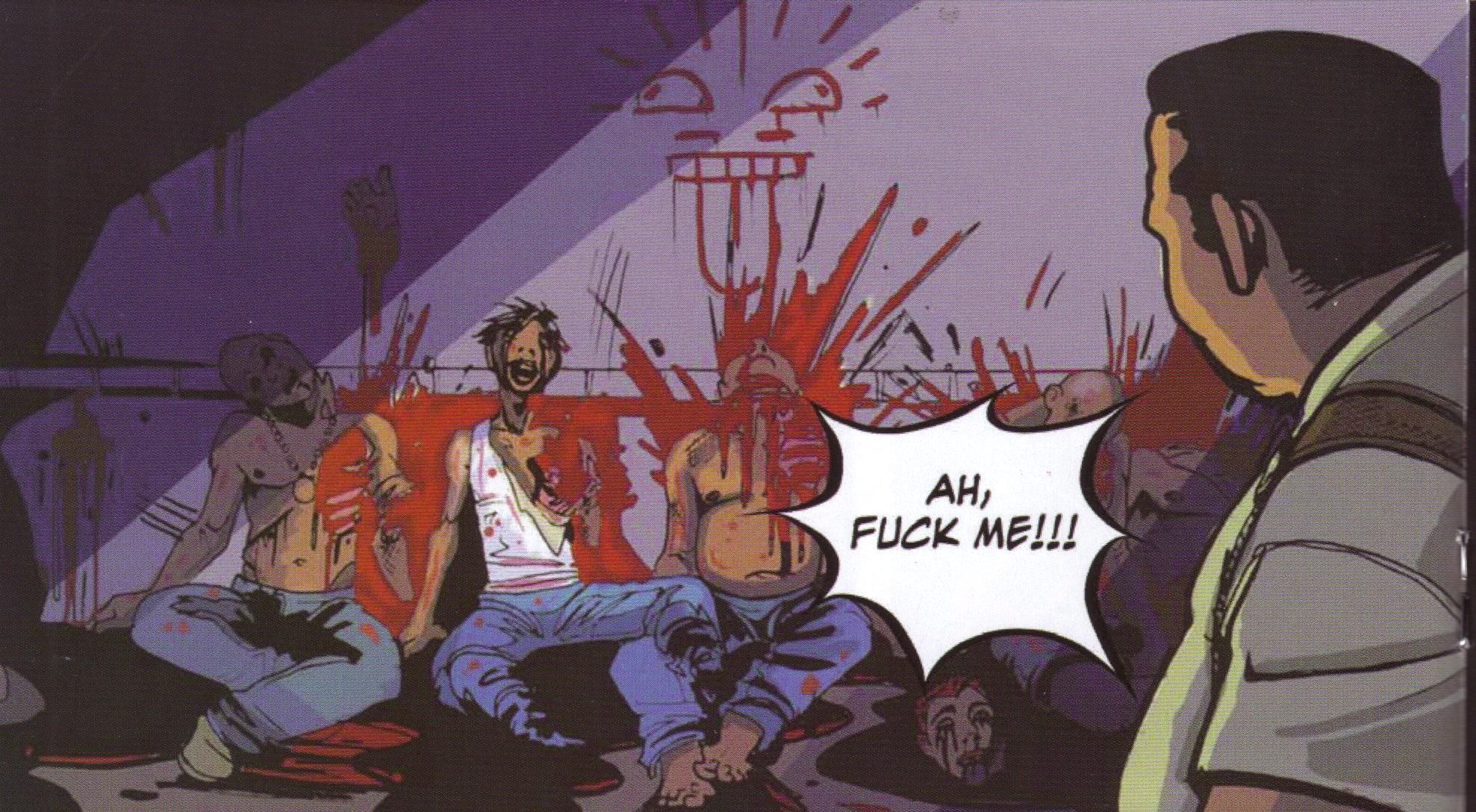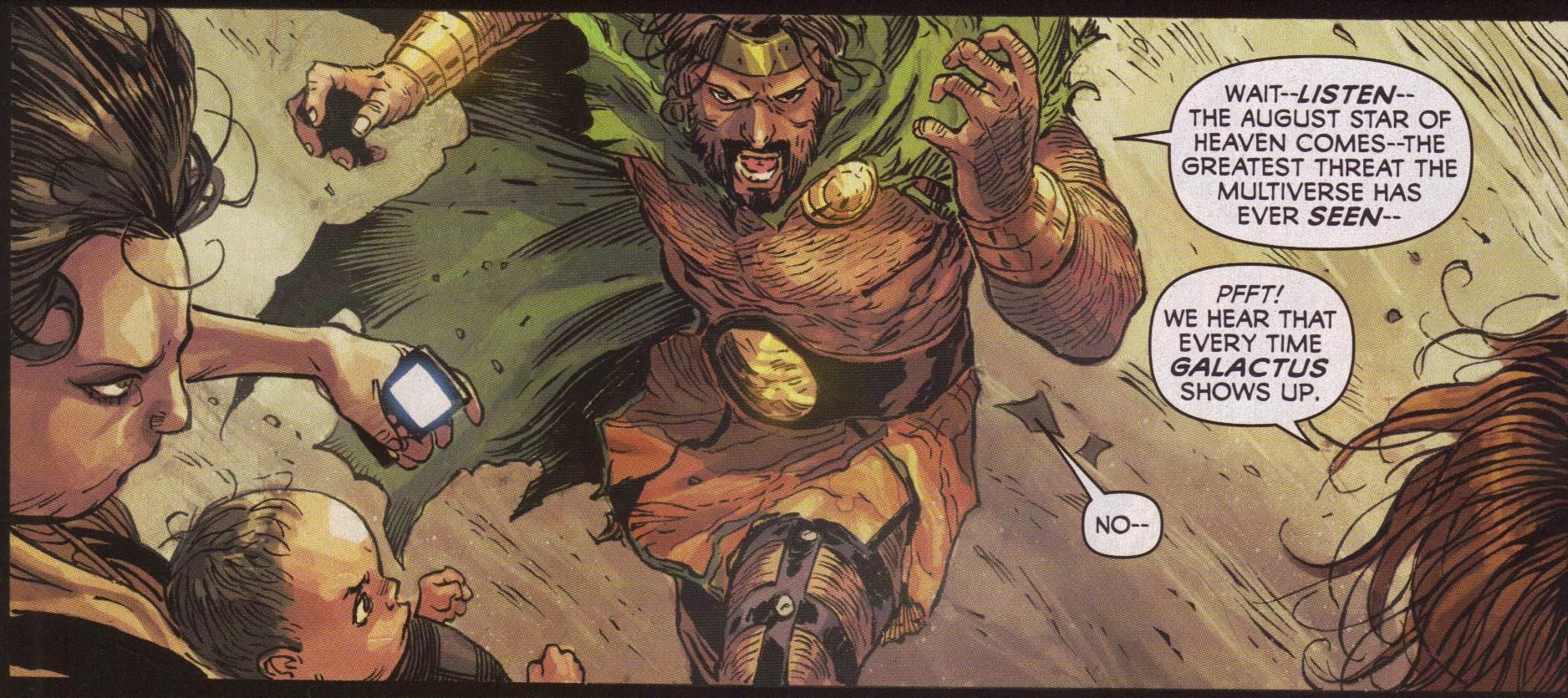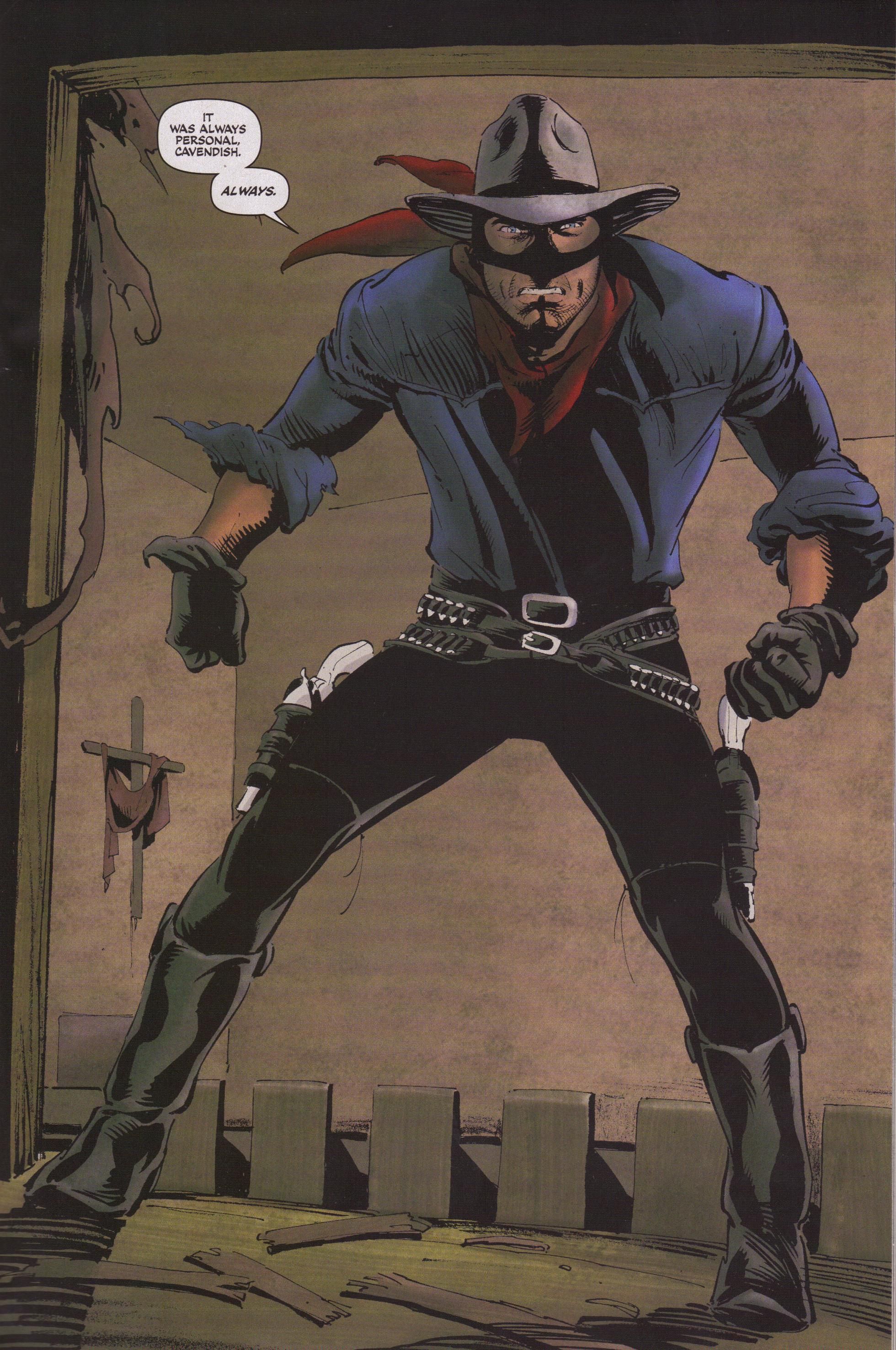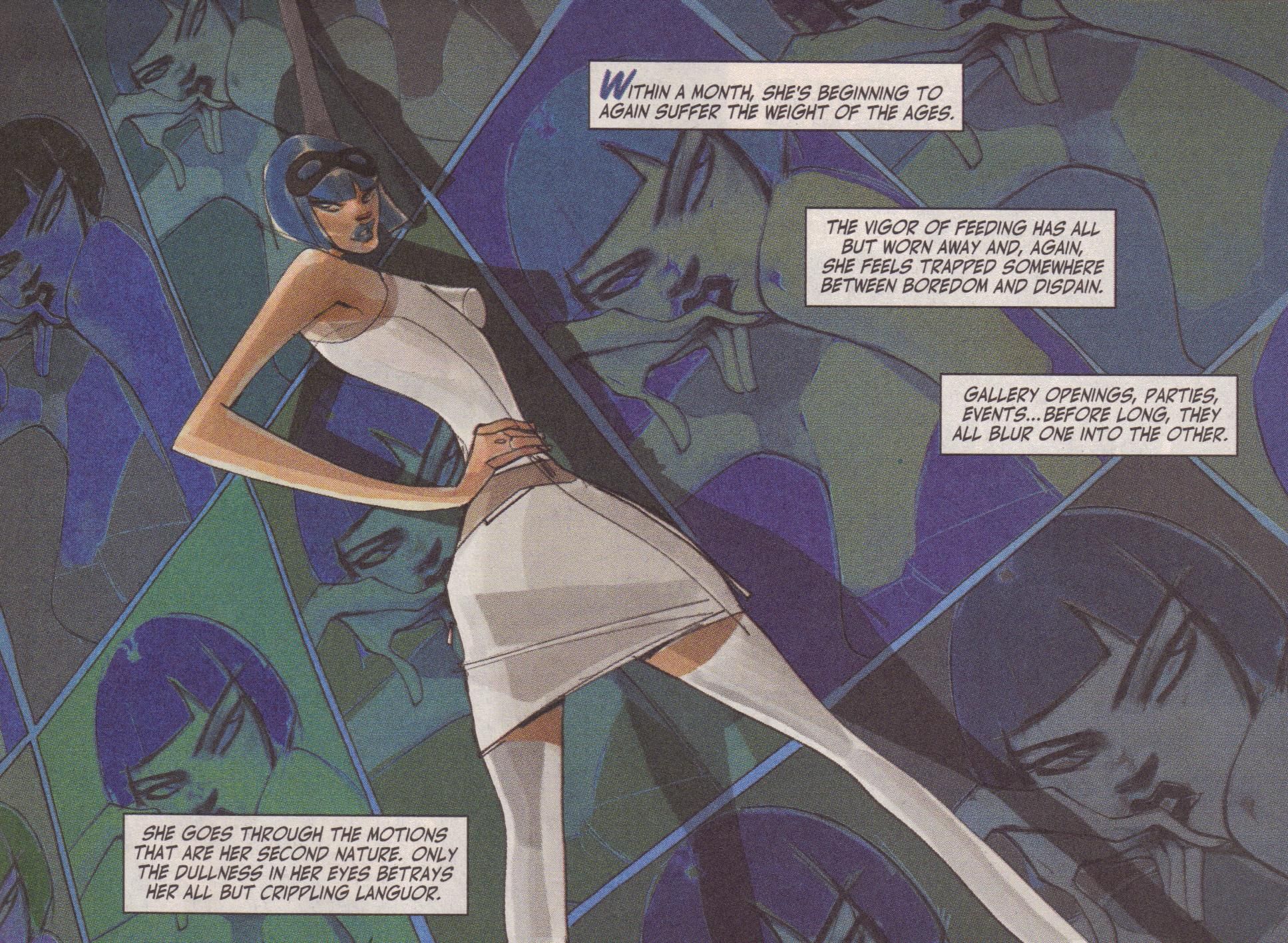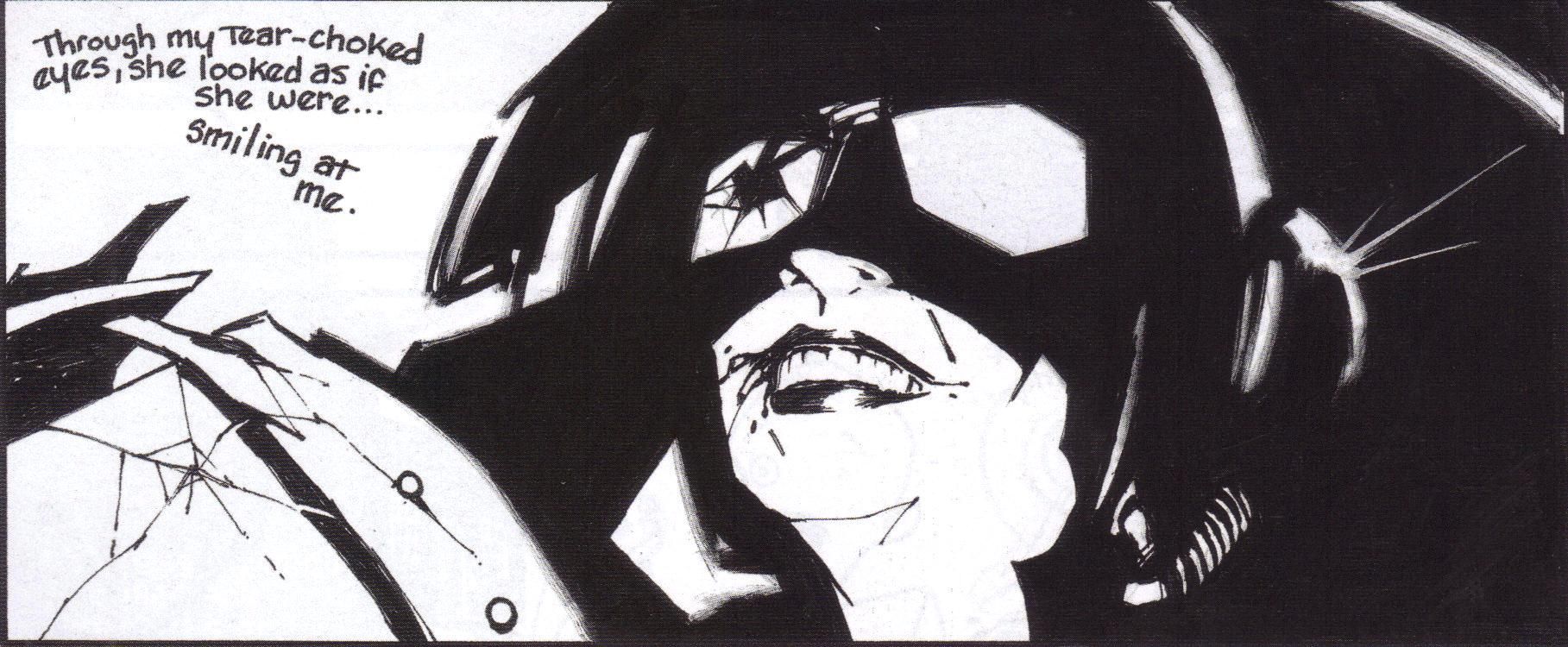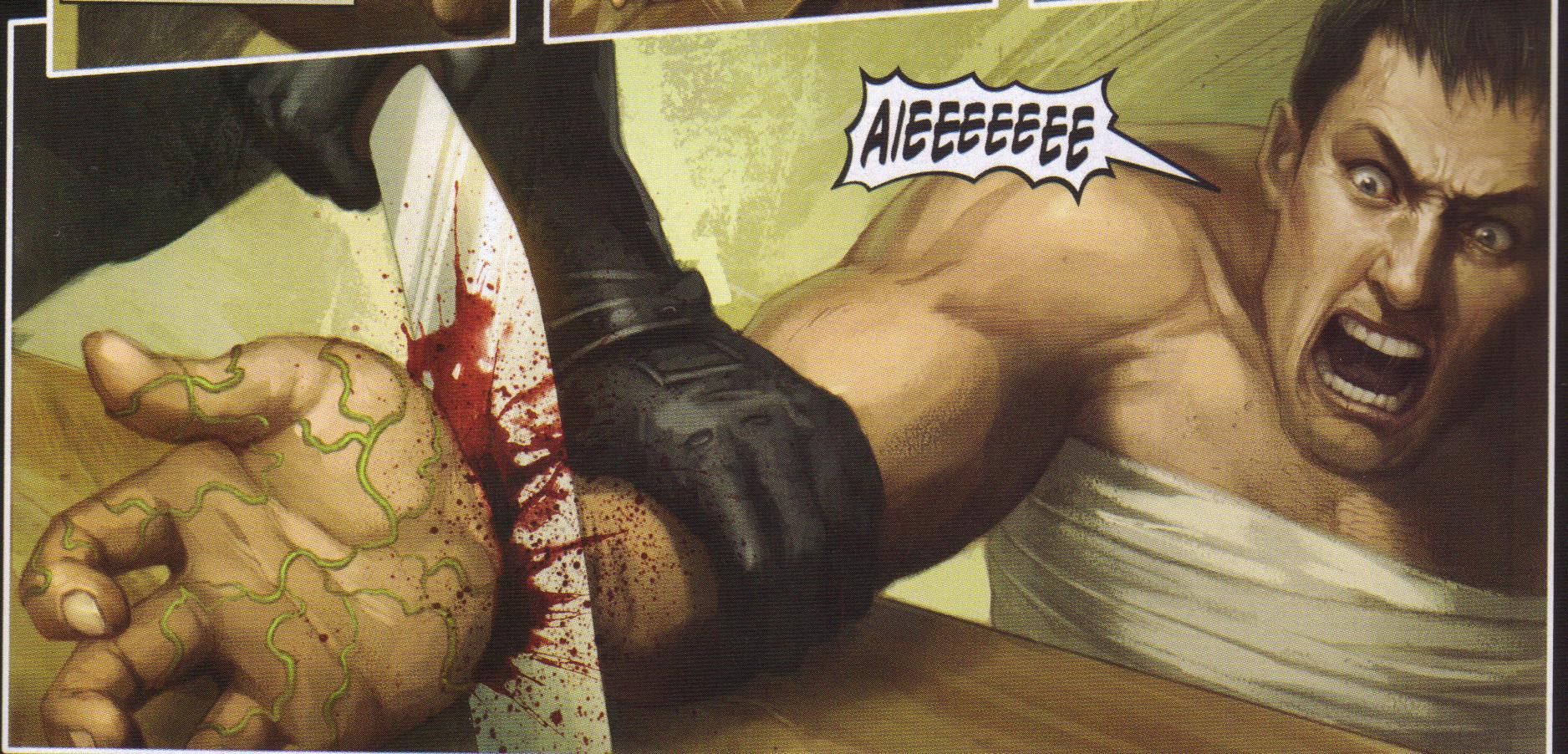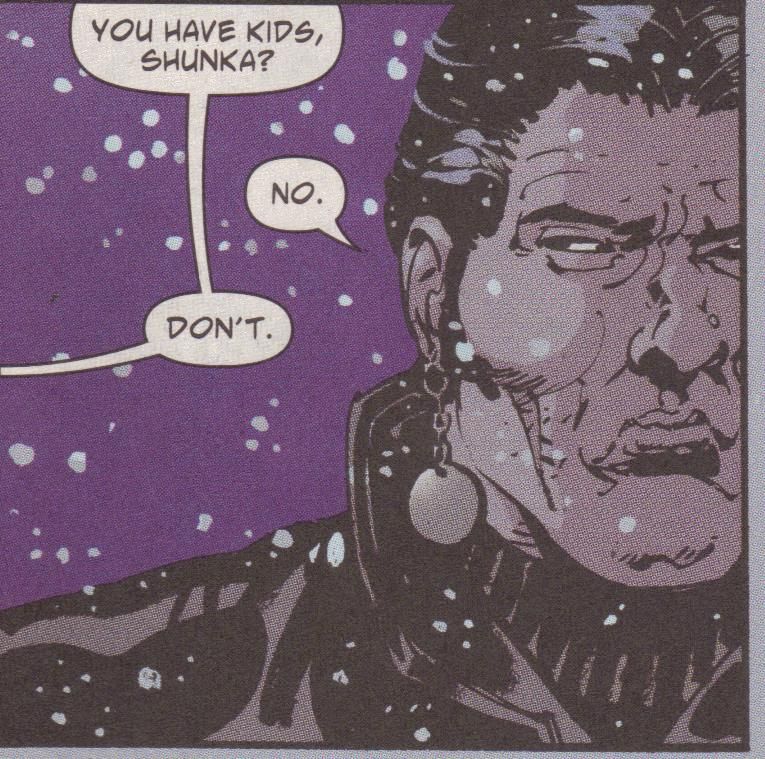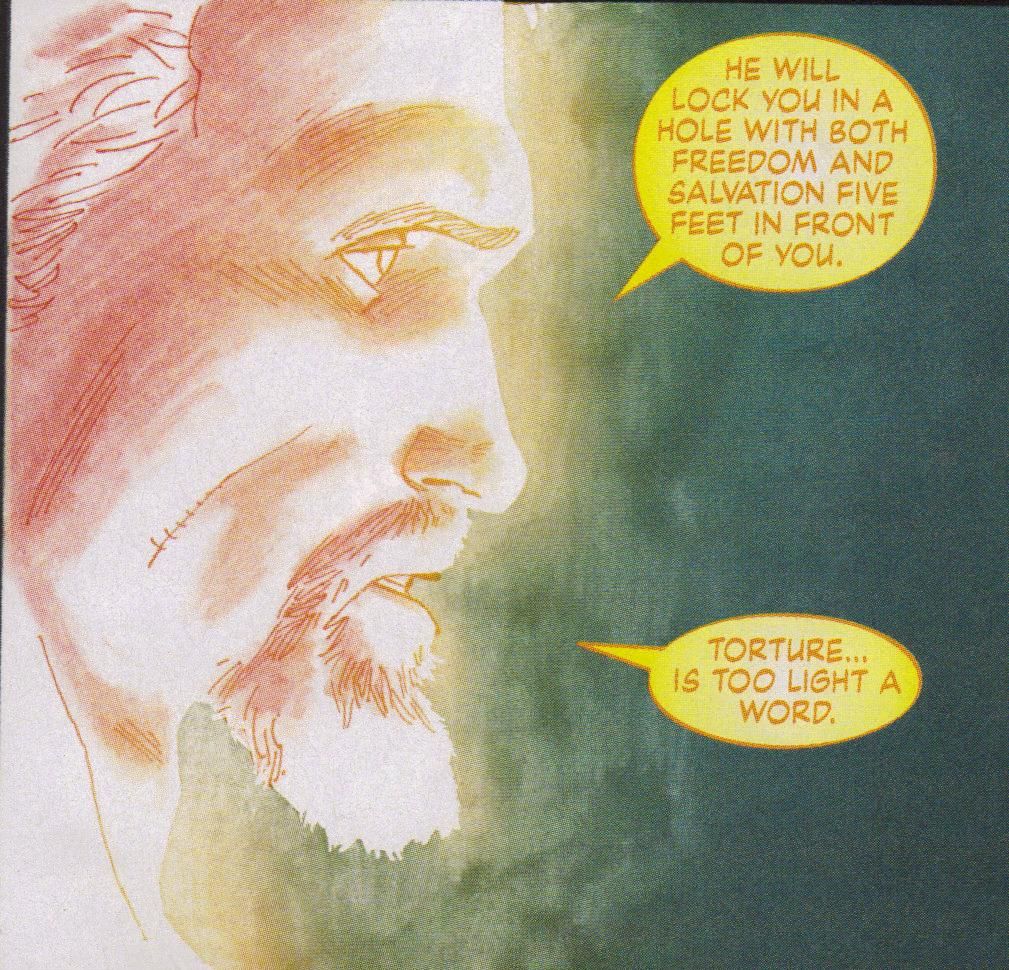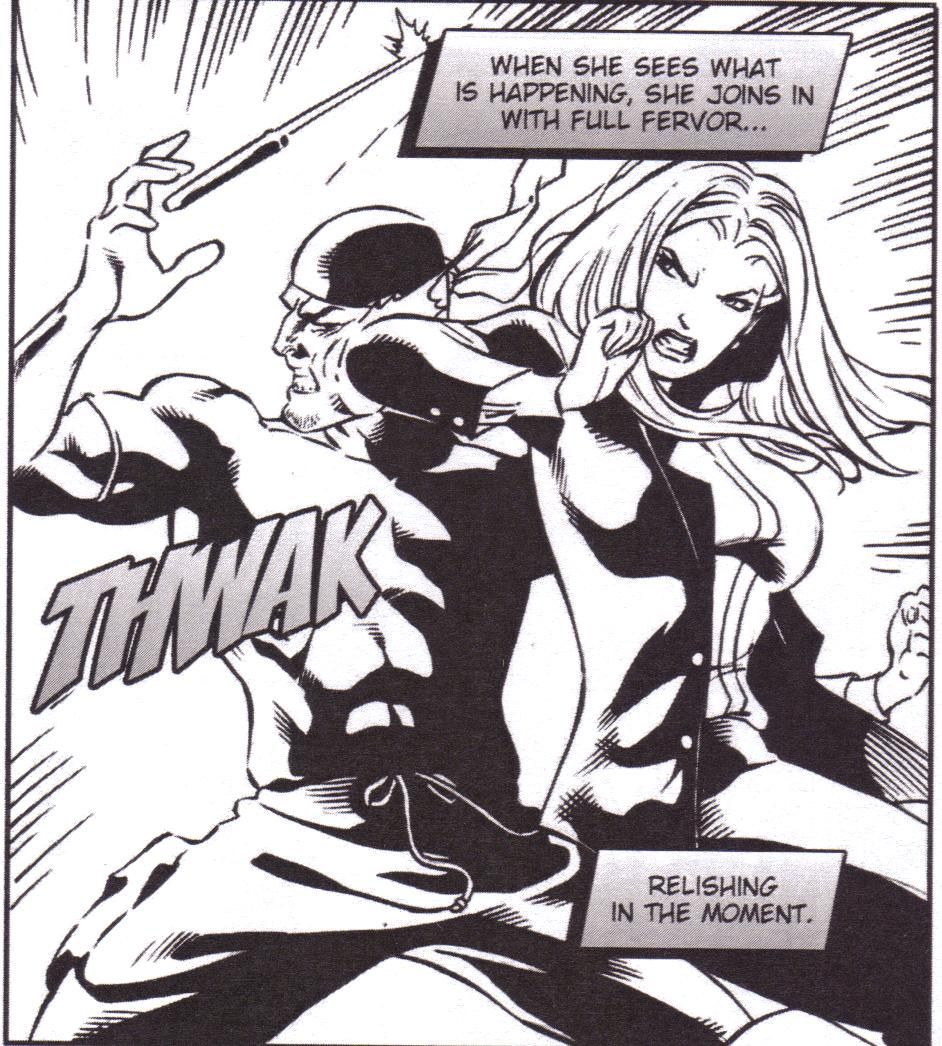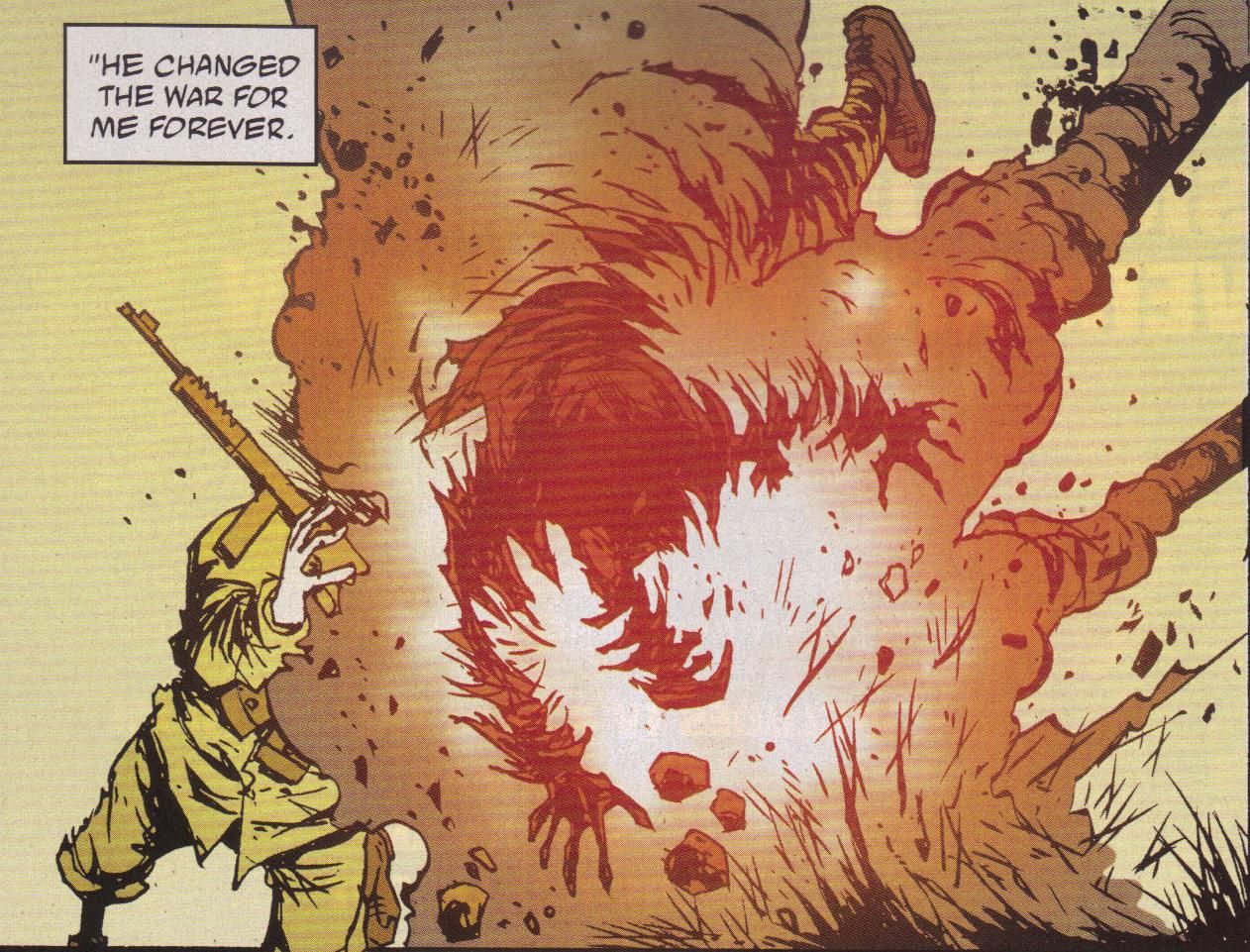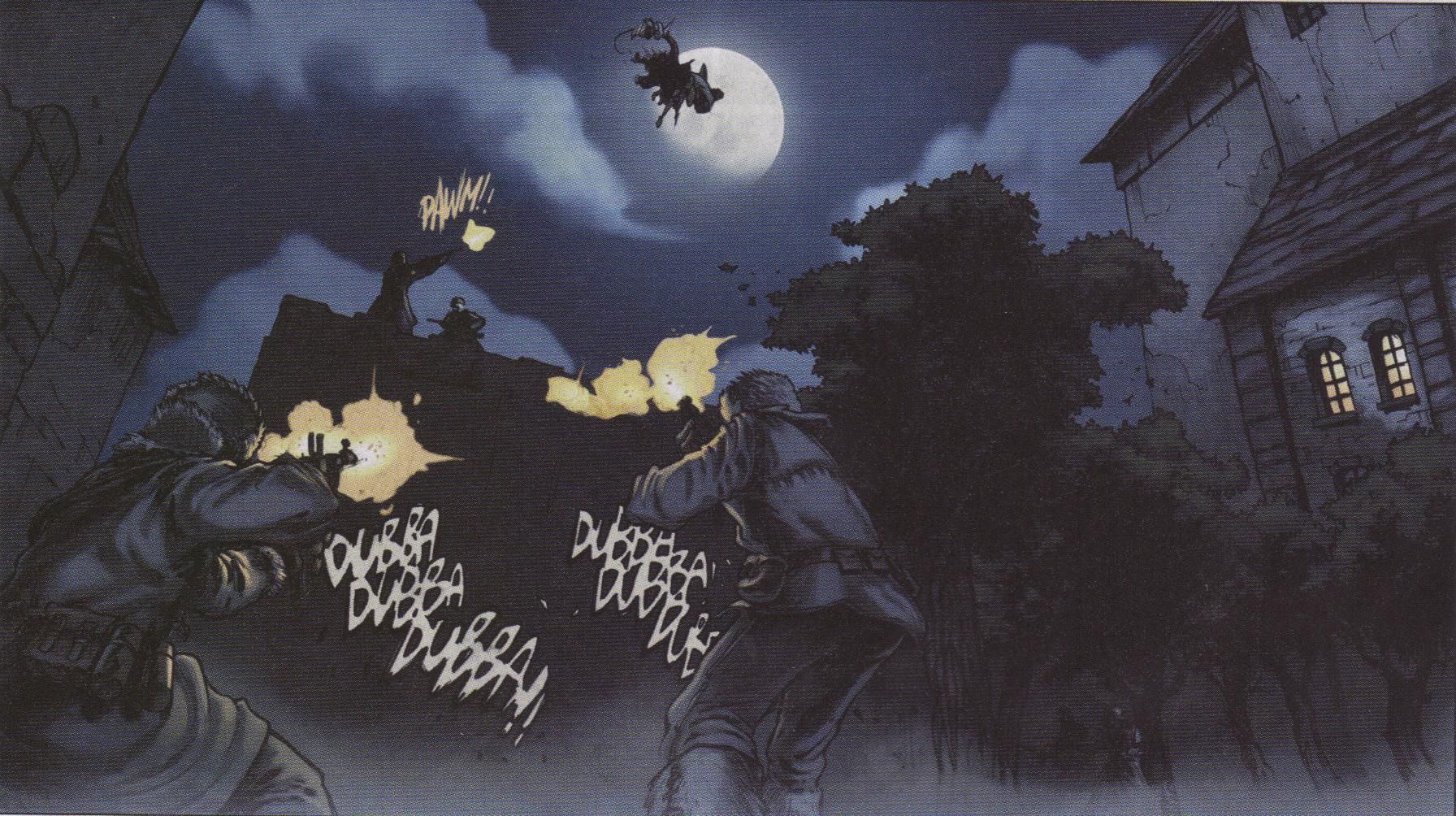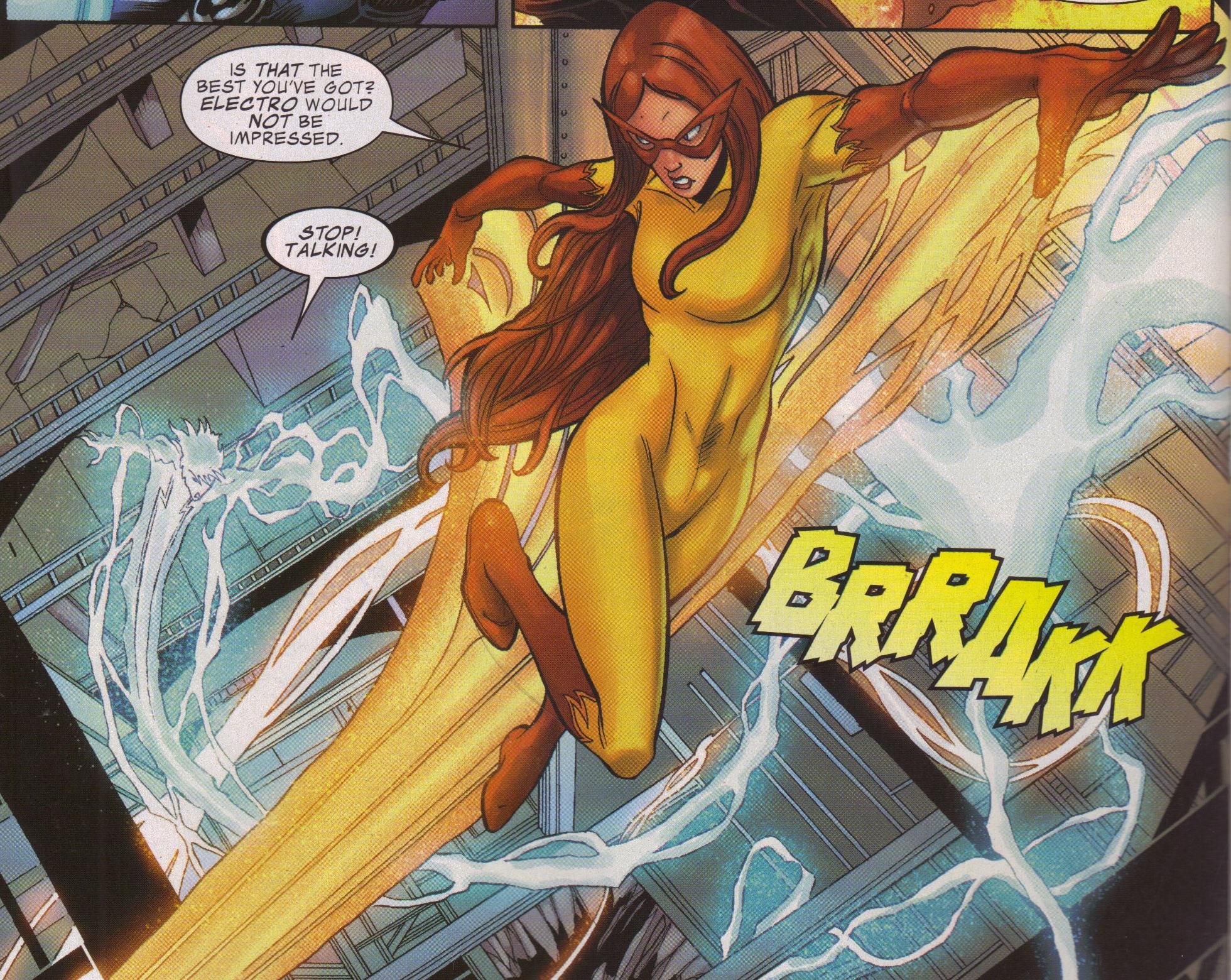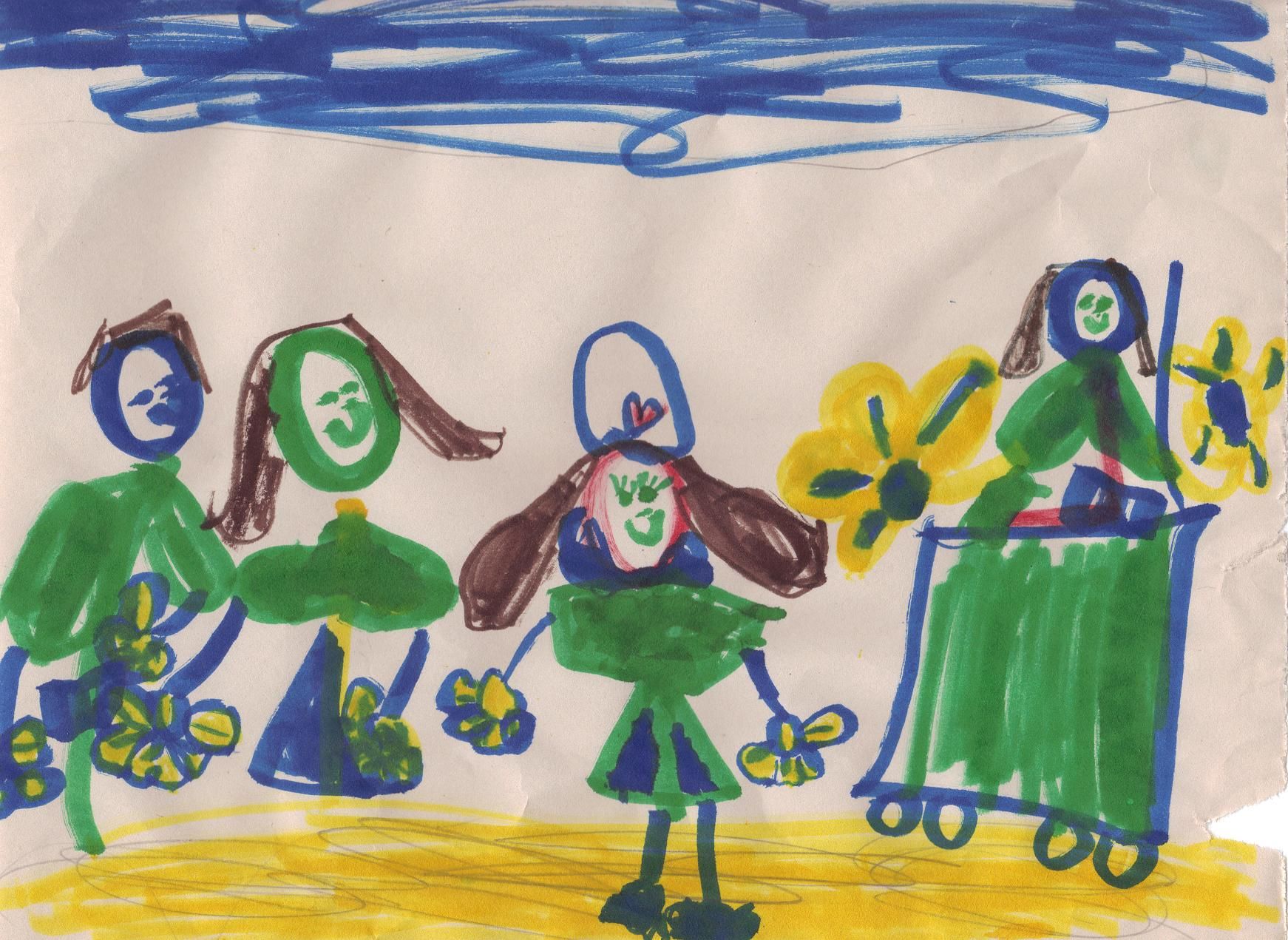"It's like blue light when you touch me," she'd say. "Electric blue light sparking between us." She'd cry softly into my shoulder, tears of passion, because she couldn't get close enough to me. (W. P. Kinsella, from The Iowa Baseball Confederacy)
Avengers Academy #5 ("Fame") by Christos Gage (writer), Jorge Molina (penciler), Andrew Hennessy (inker), Jeromy Cox (colorist), and Joe Caramagna (letterer). $2.99, 22 pgs, FC, Marvel.
Jorge Molina does a good job filling in for Mike McKone on this issue - he's a bit rougher than McKone, but there's nothing wrong with that. I don't know how much Hennessy's inks have an influence, but at least the look of the book is fairly consistent. Of course, Striker uses the wrong hand to make the "loser L" on his forehead, but maybe that was deliberate - he's so dim he doesn't even know how to do that!
Gage focuses on Striker this time around, and it's kind of bold that he actually features sexual abuse where the victim is a boy. I mean, we've seen a lot in superhero comics these days, but Striker's screwed-up childhood somehow feels different, because usually when we have icky sexual stuff in superhero books, it's retconned in and the character has never dealt with it (because it didn't exist) - see Dibny, Sue and Hardy, Felicia. Gage makes Brandon's experiences as a kid part of his personality, and so much that follows colors how he views the world, from his mother telling him to forget what happened because the man can help make him famous (which doesn't work, as the man's advances trigger Brandon's power) to how he treats women - in the funniest scene in the comic, both Finesse and Veil reject him when he comes onto them. Through it all, we're reminded of his horrible upbringing, and it helps make him far more sympathetic than if we didn't know anything about it.
As usual, the weakest part of the book is when Marvel's continuity rears its ugly head. I'm not talking about the stuff with Norman Osborn, because that's been part of the book from the beginning. I'm talking about the casual way they discuss the Wasp's death. I didn't even know Janet was dead, and I'm sure it won't last long, and I also didn't know anything about the villain crushing on her. It's a minor thing and doesn't bother me that much, but I just get annoyed when I find out someone's dead when I didn't know about it, especially in a superhero comic, because we all know she'll be back. But, as Amadeus Cho says in another comic this week, "Wev."
This continues to be a solid superhero series. Gage does a nice job with the characters, and it's kind of neat that he's giving us short little stories within the greater opening, introductory arc. I'll be interested to see what happens in issue #7.
One totally Airwolf panel:
Azteca: Ciudad Paradiso #1 by Enrica Jang (writer), Jhazmine Ruiz (penciler), and Andre Frattino (inker/colorist/letterer). $2.99, 32 pgs, FC, Red Stylo Media.
This is the first of two comics this week that deal with ritualistic murders in Mexico. That's a bit odd.
I received this in the mail this week, with a press release giving me far more information than is contained in this initial issue, which is not the worst idea but which makes it harder to judge this based on what's in the first issue. In this issue, we get a guy in a hoodie (that's him on the cover) slaughtering criminals with an Aztec weapon. Why he's doing this we don't know. Well, I do, but it's not in the issue. Jang does a pretty good job setting things up, as our mysterious killer says only a few words in the entire issue, while the rest of the community of Quetzecan reacts to the murders. We see American tourists (some of whom are accosted by criminals before they're saved by the killer), the regular folk of the town, the criminals, and the politicians, all of whom are affected in some way by the killer. Jang actually does a pretty good job balancing exposition with bloody action, and we get some good twists in the story, especially at the end. Jang's not a great writer, but she is solid, and this is a decent enough first chapter.
Ruiz has a rough, occasionally amateurish style, but the art isn't terrible. The action scenes are bloody but not terribly well choreographed - the killer is ripping the hearts out of his victims, but the hearts seem to appear out of thin air. Ruiz does a better job with the character design - we get a good sense of who these people are, and that allows Ruiz to fool us with the twist at the end. This feels like a foreign resort, too - we get glimpses of the opulence of the resort, and it's contrasted well with the less fancy local sections.
Azteca isn't a great comic, but it's not bad, either. Jang and Ruiz do some interesting things with the story, and the worst part of the book is the transfer to print - the lettering is often fuzzy and Ruiz's lines aren't as crisp as I imagine they are on-line. While the story of a ritualistic serial killer isn't all that original, for the same price as some of the Big Boys' comics, there's no reason not to check it out.
One totally Airwolf panel:
Chaos War #1 (of 5) ("The End is Nigh"/"I Was Legend") by Greg Pak (writer), Fred van Lente (writer), Khoi Pham (penciler, "End"), Reilly Brown (penciler, "Legend"), Tom Palmer (inker, "End"), Terry Pallot (inker, "Legend"), Sunny Gho (colorist, "End"), Val Staples (colorist, "Legend"), and Simon Bowland (letterer). $3.99, 35 pgs, FC, Marvel.
So Marvel revs up another mini-event (not unlike "Shadowland"), and because it's just another continuation of the Pak/van Lente Herc/Amadeus saga, I'm buying it. I shan't buy the various tie-ins, because they're stupid. Apparently they don't work, either, if sales of the Shadowland tie-ins are to be believed. So why do them? That answer lies deep inside the twisted minds of Joey Q and Danny B. Let us not go there!
This is a fairly typical van Lente/Pak Herc/Amadeus joint, which means it's entertaining, fun, full of very good character bits, and just a very good comic. Pak and van Lente have been writing these characters for a while now (almost four years, if I recall correctly), so they know what they're doing. Hercules, back from the other world in which he was trapped for a while, tries to rally the heroes against Amatsu-Mikaboshi, that god of chaos from the Skrull Pantheon story a few years back. He's trying to bring about the destruction of all reality blah blah blah - as people in this comic point out (see below), this has been happening for years, so why should they care? Van Lente and Pak do a nice job showing the cynicism of the Marvel Universe populace, although I wasn't as keen on the other heroes dissing Herc when he tries to rally them. I assume it's in there just to show that Herc has grown up a little and CAN lead a group of heroes, but when Hawkeye - of all people - wonders smugly if counting on Herc to save everyone means they're screwed, it's a little excessive. In this, it's also a fairly typical modern comic - back in the day, everyone would just jump on board, so Herc's condemnation of the various heroes he's gathered feels nice and old-school. I suppose that's the point. I just occasionally wish for the good old days, when the heroes wouldn't have to be shamed into battling a gihugic threat like "King Chaos."
I've been hot and cold on Khoi Pham's art, and in this issue, I'm definitely cold. When last I saw him working on this title, it was quite good. This is kind of a mess, and I don't know why. It seems looser than his work can be, and I don't know if Palmer's inks just aren't suited for him or if Gho's colors don't go well. Either way, while the art isn't terrible, I know Pham can do better. On the other hand, I've seen him do worse, too, so I guess there's that.
So I'm buying this for a while. There are 14 tie-in comics, and I can't even imagine why you would buy them. But I guess Marvel knows what they're doing! I mean, the market is flourishing, right?
One totally Airwolf panel:
The Lone Ranger #24 ("Resolve Part 8") by Brett Matthews (writer), Sergio Cariello (artist), Marcelo Pinto (colorist), and Simon Bowland (letterer). $3.99, 23 pgs, FC, Dynamite Entertainment.
Next issue is the final one of the series, so I don't have much to say about this one. I do have one thing on my mind, however. John confronts Cavendish and gives him a chance to make peace with God (after a nice scene where Cavendish makes John wonder who the real monster is, even though it's pretty clear). Somehow Cavendish produces a sword from inside his jacket and stabs John with it. Exactly how did John not see this? It's not a knife, it's a big-ass sword. I mean, Cariello makes it clear that John is overwhelmed by the stained-glass window of Jeebus, but still - it's not like Cavendish springs on him unawares, he waits a bit before stabbing our hero. Man, John's an idiot. It's a flippin' sword!
Oh well. Next issue - the big finale. I hope it's a good one. This has been such a good series, so I'm keen to see how it goes out.
One totally Airwolf panel:
Madame Xanadu #27 ("Extra-Sensory Part 4: Don't Touch Me There") by Matt Wagner (writer), Celia Calle (artist), and Jared K. Fletcher (letterer). $2.99, 22 pgs, FC, DC/Vertigo.
I missed issue #26. That's weird. Usually my shoppe has a few extra copies, but I guess I just missed it. As these are single-issue stories, I don't feel like I missed anything, but I am buying these stories to check out the art, so I'd like to see it. Odd.
Anyway, as I'm buying these for the art, I should write about Calle's work, shouldn't I? I have never seen her stuff before, and it's quite neat. Wagner is setting these stories during the 1960s for some reason, and while Laurenn McCubbin's work on issue #25 suited the more stilted conformist 1960s, Calle's work definitely works well for the kooky, Wonder-Woman-in-a-white-jumpsuit 1960s. She has an almost vertiginous angular style, so the fact that Neon Blue, the main character, is a skinny model works very well. She also does some wonderful things with perspective and camera angle, giving the art a very moddish, almost hallucinogenic feel to it. Calle's art definitely wouldn't work everywhere - it's almost too harsh - but it fits Wagner's story quite well.
As is the case with all these stories, the writing is the weaker of the two components. There's nothing wrong with this issue - Neon Blue is a succubus living in 1960s New York, bored out of her mind because she doesn't find much thrill in sucking out souls anymore, and only Madame Xanadu can stop her! - but because it's a model in 1960s New York, Wagner has a little too much fun filling the book with analogs of actual people. Neon Blue is Nico, and so we get Randy Warsau, Roosevelt Coates (author of Cold-Blooded Death), Subterranean Suede, the Portals (and their god-like lead singer, Ron Jameson) ... you get the idea. It's kind of annoying. (As an aside, Jim Morrison's magnetism has always eluded me - I guess, as a heterosexual male, it would. But I mean, the guy sang like a 50-year-old lounge lizard spouting poetry written by a 14-year-old Goth chick - I guess in the Sixties, that was enough to get you laid all the time - and Mazarek's "three notes and a cloud of dust" organ playing just contributed to that. I guess what I'm saying is that The Doors suck. Even "The End" and "L. A. Woman," the two songs by them I like, aren't as deep as people like to pretend they are.) But while Wagner's story isn't great, it's not terrible, either. And he lets Calle show her stuff, which I guess is the point. So there you have it.
These are weird issues, because I wonder if Wagner knew the book was cancelled before he came up with this idea. A series on the ropes won't gain many new readers by doing this, but Wagner may not have cared. "I'm showcasing these artists," he said to himself and to Editor Shelly Bond, "and damn the torpedoes!" Wev again. I like the showcase, even if it may have killed off a struggling series.
One totally Airwolf panel:
Meta 4 #3 (of 5) by Ted McKeever (writer/artist/letterer). $3.50, 22 pgs, BW, Image.
As this is issue #3, there's not much to say about the way McKeever is moving us through the story - you're either on board or not, and while he gives us a little bit more information about what's going on, he also raises some other questions, so we're just along for the ride right now. What continues to amaze with this series is McKeever's art, because he's doing such a nice job contrasting his "usual" style - with more solid lines - with the softer style he's experimenting with, especially when he blends them, which give us hauntingly beautiful images like the panel below. The style adds a touch of dreaminess to McKeever's art, pushing it even further into the surreal than is usual with his art. The softer touches in the art also makes the story a bit more emotionally effective, as McKeever's characters aren't quite as rigidly defined by the solid line he usually employs. Meta 4 is really a stunning piece of comics art, and the fact that the story is still intriguing is just a bonus. I'm fascinated by where McKeever is going with the story, and I'm glad I get to look at the art along the way.
One totally Airwolf panel:
Ryder on the Storm #1 (of 3) by David Hine (writer), Wayne Nichols (artist), Feigian Chong (colorist), Sansan Saw (colorist), Richard Starkings (letterer), and Jimmy Betancourt. $4.99, 52 pgs, FC, Radical Comics.
Radical sent me the preview issue of this, and I enjoyed the set-up, because I dig noir detective stories and when it comes to horror, Hine knows what he's doing. In the preview, we get a brief introduction: a P. I. named Ryder (he refuses to tell his client his first name when she asks) gets a call from a high-class call girl telling him that her companion has killed himself ... by drilling eleven holes into his head. So now, in issue #1, Ryder discovers that the victim was the son of journalists who had investigated the city's richest and most powerful family and, of course, disappeared for their trouble. The son was convinced that the world was once ruled by "daemons," and he also became convinced he was possessed by one - hence the suicide. Of course, Ryder gets in a fight with one of these daemons and also discovers that he himself might not quite be human (the cover pretty much gives this away). And away we go!
Hine does a decent job with this premise, even though it's not the most original idea. An old family that made a deal with devils? Ruling a city secretly with a veneer of respectibility? It's been done, but that doesn't make it a bad story. Hine does a nice job with the details - we don't get the name of the city, but it's a weird futuristic retro-noir kind of place, like Los Angeles in Blade Runner. The most intriguing part of the book is where Ryder's client, Katrina, works - it's an S & M club, and Hine does a nice job in only a few pages making it truly disturbing. Details like this make the book more interesting than it should be - and it makes me wonder if Hine will continue on a fairly standard course or make the comic something much darker and dangerous.
As I wrote about Nichols' art in the preview, it's much like the regular "house style" of Radical, in that it looks very digital and airbrushed, but at least you can tell that Nichols has some chops, and the coloring, so often an issue in Radical books, is bright enough that we can see what's going on. It's not my favorite art, but it suffices.
It would be nice if Hine ditched the daemon plot and concentrated on the weirdness of Katrina's club. I'm sure it will play a part, but it's much more interesting than a family making deals with supernatural forces. Oh well.
One totally Airwolf panel:
Scalped #41 ("Unwanted Part Three") by Jason Aaron (writer), R. M. Guéra (artist), Giulia Brusco (colorist), and Steve Wands (letterer). $2.99, 22 pgs, FC, DC/Vertigo.
I don't want to shock you, but this is another terrific issue of Scalped. Okay, now you can pick yourself up off the ground, because I know that floored you. Take deep breaths. It will be okay.
Actually, I have one small problem with the issue. In the beginning, Red Crow's mother, pregnant with Lincoln, gives serious consideration to aborting the fetus ("serious" meaning she has the coat hanger poised in prime stabbing position before she chickens out). Then she whimpers, "Why don't you just die?" What could I possibly object to in this scene? Well, it's not quite as bad as calling her unborn child "evil," but it kind of bugs me when it's revealed that a bad dude in life was causing problems even before he came out of the womb. I mean, we don't exactly know why his mom wanted him gone (presumably because she wasn't happy with the father - she has a black eye and a split lip), but this kind of "evil stalking the earth FROM THE WOMB!!!!!" is kind of annoying. I guess I'm reading too much into this. But it still bugged me. Anyway, if his mother, who's fairly far along in the pregnancy in the beginning, hates her child so much, she could just wait until he's born and then strangle him. Or leave him in the Badlands for the wolves. Yes, it's horrific, but she obviously loathed the kid before he was even born, so what's the difference?
I should point out that Guéra's art is amazing, especially when Carol and Dino talk about parents in the semi-darkness of Granny Poor Bear's house. It's great writing, but Guéra's and Brusco's artwork elevates it so much. Very cool stuff. But then, Guéra's art is always stunning, isn't it?
One totally Airwolf panel:
Secret Six #26 ("The Reptile Brain Part Two of Four: Forced Merger") by Gail Simone (writer), Jim Calafiore (artist), Jason Wright (colorist), and Travis Lanham (letterer). $2.99, 22 pgs, FC, DC.
One thing that bugs me about superhero comics is some of the more ridiculous aspects of it. I know I might get myself in trouble by objecting to some ridiculous things and not others, because I honestly have no problem with superpowers and those sorts of things, but Skartaris bugs the hell out of me. It bugged me when I first read about it and it still bugs me. I guess it's because the very notion of Skartaris - a world on the inside of our planet, remember, where it's never night because the Earth's core (I guess) is the sun, and it never goes down - is so very, very idiotic, and while I could deal with it a bit when Grell wrote Warlord back in the day because it was just a MacGuffin to get a modern man into a prehistoric world, when it starts interacting with the regular DCU, it just shows once again how stupid it is. My question is: Has anyone changed where Skartaris is, or is it still on the inside of the Earth? Our characters get there through some kind of portal, so if it's somehow become an alternate reality, I can deal with that much better than I can with the original version. Especially when Simone brings in the concept of a nuclear strike on U. S. soil, which she does in this issue, and that adds too much realism into the book for me to deal with Skartaris. Man, it's stupid.
Once I get past that, though, it's a typically good issue of Secret Six. It's always fun to see Amanda Waller stymied, even if it's only for a panel, and Simone does a nice job doling out information slowly - we now know about that nuclear strike, but not much else about it - and showing the characters reacting to each other (now that Bane and Jeannette are on a different team which is at odds with the "original" group) as they fight. Who knew Alice could bluff like that, or that Bane was that noble? Well, we knew that Bane was that noble because he's shown it throughout the series, but Simone just adds another layer to his personality. It's very well done.
I'm not one of those people who refuses to buy this book because Jim Calafiore is drawing it, as I actually like Calafiore, but in the back of this issue there's a preview of Nicola Scott's work on Teen Titans. Sigh. Here's hoping she gets back on a book I want to read soon.
One totally Airwolf panel:
S.H.I.E.L.D. #4 ("The Madness, the Star Child, and the Celestial Madonna") by Jonathan Hickman (writer), Dustin Weaver (artist), Christina Strain (colorist), and Todd Klein (letterer). $2.99, 24 pgs, FC, Marvel.
Four issues in, and S.H.I.E.L.D. is still a crazy mess, but unlike some other crazy messes, I don't care. Hickman and Weaver are giving us a story that simply feels more epic and so very suited for comics, so I can forgive the storytelling problems and just go along for the ride. I mean, despite Weaver's astonishing sequence where Leonardo retrieves something (I won't spoil what it is) from the sun, I kept thinking, "How is he not burning to ash instantly?" It's COMICS, man! But still - it's a little goofy. Still, S.H.I.E.L.D. just feels like a better comic than a lot that's out there right now - it could all turn out to be crap, of course, and Hickman might have absolutely nothing to say, but I'm so happy that he's eager to do something like this and just go absolutely nuts that I will stick around. And it's not like the story is bad, it's just a bit sprawling and doesn't feel like it means anything yet. The curse of serial storytelling, I suppose. But dang, it's fun to look at!
One totally Airwolf panel:
Trouble Point #1 ("The Most Dangerous City in the World") by Julian Lawler (writer), Eddy Barrows (penciller), Nelson PM (inker), and Oliver Lee Arce (letterer). $3.50, 24 pgs, BW, Broken Tree Comics.
This is the second comic of the week that deals with ritualistic murders in Mexico. This one is a tiny bit more rooted in reality, as it's ostensibly about the staggering number of killings around Juárez, right across the river from El Paso. The solicitation for the book sounded interesting, and while I'm not the biggest fan of Barrows' work, I knew that at least it would look professional.
It's not the worst book around, but it's not very good. Mainly, it's because Lawler is really trying to pack way too much into this book, and none of it makes too much sense. It begins with, presumably, the ghost of one of the murdered women, who's speaking to someone about the murders but can't reveal too much. Then, we see that she's talking to some dude whose sister appears to be a vampire. They're part of a group that's investigating the murders. The narrator, whose name we don't learn, is in the city with some dude named Cuba, and they happen to stumble into a convenience store robbery. The narrator has some weird power that he can transfer to other people, so he gives the three hostages (a hot blonde woman, an old lady, and the wimpy clerk) a taste and they mop the floor with the bad guys. It turns out the blonde is an FBI agent, who's in town investigating the murders. And she's sleeping with her hunky partner. Anyway, this strange group visits a stereotypical elderly witch-woman, and then apparently sends one of their number to kill the male FBI guy (which is how we know the blonde is sleeping with him). The FBI guy - David - is apparently killed, but the mysterious ghost from the beginning enters his body and takes his soul to Limbo, where he agrees to help him. And a truck driver smuggles something into the U. S. Got all that?
It's a bit of a mess. Lawler doesn't identify the members of the group too well other than giving them facial hair or lack thereof. The vampire sister says that "Matt" and "Leo" are in Juárez, but on the very next page, the narrator begins, and he identifies his companion as "Cuba" and doesn't name himself. So who are these people? Why are they trying to solve the case but killing FBI agents? Why did Lawler name the female FBI agent "Stalin"? (Seriously, she's Agent Stalin. If you are born with the last name of "Stalin," wouldn't you change it? It's only slightly better than having "Hitler" as your last name.) I don't mind some mysteries - the powers, the contents of the truck - because I understand the serial nature of the medium, but it's a bit too opaque for my liking, especially when I have no idea who the people are.
Barrows' art isn't bad, although it's very 1990s, bad haircuts and all. The members of the mysterious group even dress like the X-Men of that decade, with seemingly non-functioning straps on their clothing and a leather bustier on the vampire sister. Barrows also makes everyone look pretty similar, which is frustrating when you're trying to figure out who the people are. His storytelling isn't bad, but the design of the book isn't great.
Trouble Point, like a lot of comics, wants to deal with "serious" issues but can't seem to leave the trappings of a superhero comic behind. There's nothing supernatural about the murders around Juárez. But these creators seem to want there to be, so they can have people with powers and weird ghosts. Too bad.
One totally Airwolf panel:
Unknown Soldier #24 ("Beautiful World Chapter Three") by Joshua Dysart (writer), Alberto Ponticelli (artist), Oscar Celestini (colorist), and Clem Robins (letterer). $2.99, 21 pgs, FC, DC/Vertigo.
In contrast to the previous comic, Unknown Soldier is a comic that deals with serious issues and does it well, if not perfectly. Dysart has always claimed he's writing a kick-ass war comic instead of one that highlights the horrors of the Ugandan war, but that's part of why he's successful at highlighting the horrors of the Ugandan war - by placing Moses Lwanga in the middle of this situation, he's able to show very well how horrible the war is without being too obnoxious about it. In fact, as I've argued, the worst issues of this series ("worst" being a relative term, as none have been too bad) are ones where Dysart addresses the war directly instead of allowing Moses to experience it first-hand - those few issues feel heavy-handed. When Dysart simply follows Moses through his crucible, it's much more effective at showing how terrible the reality of Uganda is.
Of course, that doesn't apply too much to this issue, as we get the "secret history" of the Unknown Soldier (the original one) and what his grand plan for Moses really is. It's not a retcon (I didn't dig through my Showcase volume about the original Soldier, but I don't think Dysart contradicts any of the vague stuff established by Kanigher and Kubert), but more bringing us up to date. It's a nice little story that sets up the final issue pretty well. And the fact that Ponticelli does a very keen job with the soldier pre-Unknown days is neat, too.
Based on what we learn in this issue, I'm sure the ending of this particular chapter is a bit misleading, but we'll see. I will miss the series, however, because it's very good. Darn it.
One totally Airwolf panel:
Whispers in the Walls #3 (of 6) by David Muñoz (writer), Tirso (artist), Javi Montes (colorist), Silvia Villamisar (coloring assistant), and Alex Donoghue (translator). $3.50, 27 pgs, FC, Humanoids.
Muñoz continues to unspool this series nice and slowly, from the beginning of the issue, where the mysterious dude in Prague last issue fights a minotaur, all the way through the end, when Sarah finally meets the dude. As with most good comics, we get enough answers to keep us hooked but not enough to kill interest in the series. Muñoz does a good job keeping the focus on Sarah, so that we know only a little more than she does even though it's obvious that so many others - even, possibly, Marketa, the other girl who is terribly jealous of Sarah - know more than she does. He doesn't leave us in suspense too long, either - we know the people at the orphanage aren't nice, so when one of them is nice to Sarah, it's not long before we find out that he doesn't have her best interests at heart. Of course, when Sarah reaches Prague, it feels like a frying pan/fire situation, so we'll just have to wait and see about that. As seems to be common with European comics because of the difference in format, the issue ends really, really abruptly, but I can't imagine it ended the same place in the original version.
The biggest problem with the book is the coloring, which is really, really dark. Again, I'm not sure if the original was printed on paper that didn't mute the pencil work as much and therefore the coloring was appropriate, but the paper here is slick and un-Vertigo-like (although, to be fair, Unknown Soldier is printed on slick paper, even though Madame Xanadu and Scalped are not), so I don't know if that has much to do with it. All I know is that Tirso's work is quite good, but it's often very difficult to see. It's vexing. I know the mood has to be established, but man, it's annoying.
One totally Airwolf panel:
Young Allies #5 ("Now, Not Tomorrow Part Five: Windows and Walls") by Sean McKeever (writer), David Baldeón (penciler), N. Bowling (inker), Chris Sotomayor (colorist), and Joe Sabino (letterer). $2.99, 22 pgs, FC, Marvel.
I don't want to go all prudish here, but there's a death in this issue that bothered me. Not because I don't enjoy some good carnage in my comics, but, as usual, because of the context. I won't give it away, but the dead person is someone who is more to be pitied, yet McKeever kills this person off rather casually, and I guess it's supposed to establish the new villain (do you capitalize the "the" in "The Superior"?) as bad-ass, it's still somewhat off-putting. Like many of these things, I can't explain it very well, but when I got to that page, after what McKeever had done with the characters in the previous issues and in this particular one, I felt like it was, I don't know, kind of a cop-out. I wasn't sad that Baldeón stopped drawing the made-up person, but I felt like McKeever had plenty of things to do with the character, and the instant the character became interesting, McKeever slaughtered the person. Oh well.
The first arc ends pretty well, especially because this still isn't really a group. They came together for a threat, but McKeever does a nice job giving them the personalities so that a group might be problematic. However, he also shows that they work well together and are able to influence each other (Toro does so with Gravity), so it will be interesting to see how McKeever brings them together again (I mean, it's the name of the book, for crying out loud). McKeever is good at the group dynamic and with the youth of the characters, so we'll see. But I do enjoy the book, so I guess I'm on board for now.
I would like to see McKeever address Angelica and her cancer, because he brings it up here. And I'm not talking about her condition ... I'm talking about her wig. She loses it in the battle and she does have hair, it's just short. Far be it from me to give writing advice, but I think a scene where Greg and Angelica discuss why she wears one (I can understand from a vanity standpoint, but it's not like she's bald) and what it means to her, because that could, obliquely, be an interesting conversation about cancer without being so heavy. Anyway, that's my two cents. I'm sure Sean McKeever is going to sit down immediately and write that scene, because I'm so awesome. Either way, the way he brings it up cancer in this issue is pretty well done, and it makes me hopeful for the future when he addresses it (unlike that Firestar special, which didn't make me hopeful at all).
It's kind of neat that both this and Avengers Academy, the first issues of which came out on the same day, both end their first arcs on the same day. Both are solid superhero comics taking different approaches to team books, and I'm impressed with both enough to keep going. Well done, Marvel! Now I'm sure you'll cancel them to launch yet another Deadpool book. THE WORLD NEEDS MORE DEADPOOL COMICS, DAMN IT!!!!!!!
One totally Airwolf panel:
Fluorescent Black by MF Wilson (writer), Nathan Fox (artist), Jeromy Cox (colorist), and Sean Konot (letterer). $24.95, 194 pgs, FC, Heavy Metal Magazine.
The guy at my comics shoppe took a look at this and declared Nathan Fox's art decidedly un-pretty. Sigh. I don't know what to do with him. He has a fairly eclectic palette, but he definitely likes smoother lines and clearer art. But he's crazy, because Fox's art is stunning on this. And it's gigantic, too - this book didn't fit on my scanner, and you'll notice the cover up above doesn't have the credits on it because they were too far down for me to capture them on my scan. I don't know if the comic is any good, but damn, it looks cool.
Ghost Rider by Jason Aaron Omnibus by Jason Aaron (duh!), Roland Boschi (artist), Tan Eng Huat (artist), Tony Moore (artist), Dan Brown (colorist), José Villarrubia (colorist), Dave McCaig (colorist), Lee Loughridge (colorist), and Joe Caramagna (letterer). $49.99, lots of pages, FC, Marvel.
Yes, I will finally catch up on Ghost Rider, so you can all stop bothering me. I read issues #20-23, which begin this collection, but halfway through the Huat stuff, I lost interest. Then everyone kept telling me how well it ended. So I got this. 22 issues for 50 bucks in a nice hardcover? Yeah, I'll take that.
The Outfit by Darwyn Cooke (writer/artist). $24.99, 152 pgs, BluW, IDW.
This is the kind of art the guy at my comics shoppe likes. To be fair, you'd have to be insane not to like Cooke's art. I just hope the writing on this is more like The Man With the Getaway Face than The Hunter.
I'm sure you're digging the baseball playoffs, even though a re-run of Family Ties on Bravo probably gets better ratings. (N. B. I don't think Family Ties runs on Bravo, although I haven't checked.) Let's review:
I thought the St. Petersburg Rays were supposed to be good. Dang, they look awful, from what I've seen.
The Minnesota Twins are probably preparing some kind of Satanic ritual whereby they offer up Francisco Liriano's soul so that they don't have to play the Yankees in the playoffs next year. Man, I hate the Yankees, but they know how to beat the Twins, don't they?
Somewhere in the frozen wastelands of the North, Chad Nevett is wondering what might have happened if the Blue Jays had actually put a good team around Roy Halladay. Damn, he's good. He's so good that I watched the last few innings of his no-hitter without really worrying, because the Reds look like a bunch of Little Leaguers up there. That had to be the least anxious no-hitter in history. Cincinnati couldn't do anything. It looked like they just gave up after the second inning. And as I troll the SBNation for blogs of the Phillies' opponents (which I do), I notice that the comment sections, which are often about how classless Philadelphia fans are, are far more mean-spirited and downright evil than the Phillies' one. I mean, during the no-hitter, the Reds' fans (who were naturally upset that their team sucked so bad) were just ripping everyone they could think of and giving absolutely no credit to Halladay, who of course pitched the entire game while fellating the umpire so he would get every call. Stay classy, Reds' fans.
As much as I hate the Braves, they got absolutely ROBBED last night. They should still be playing that game, and it should be 0-0 in the top of the 63rd inning right about now. Man, the umpires suck. And Tim Lincecum is back to being scary good. I still feel good about the Phillies against either of these teams in the next round because the Giants' offense is so very, very terrible and the Braves aren't very good, but if it's Philadelphia-San Francisco, there are going to be a lot of low-scoring, stomach-churning games, I'll tell you that much.
But let's move on! I'd like to point out that my daughter Norah is quite the artist:
You'll notice a couple of things: She's in the center of the picture, because she is, of course, the center of the universe. Second, if my other daughter's wheelchair looked like that, it would be awesome, because that thing looks like a tank. Third, you'll notice we're all wearing winter clothing, because Norah is obsessed with winter even though she's never seen snow. Fourth, you'll notice we're all looking at her adoringly, which ties into that whole center-of-the-universe thing. Fifth, she's five years old and her faces are still more expressive than Rob Liefeld's. Yeah, I went there.
On a more serious note, I'd like to let you know that my lovely wife, who has polycystic kidney disease, is walking on 17 October to raise money for research and education. If you happen to have a bit of extra cash lying around, check out this link to sponsor her. Look how cute she is! How can you resist her charms????? (I certainly don't want to make anyone feel guilty - we're all friends here! - but I do have a bigger forum here than I do anywhere else, so I hope you forgive this little intrusion into your comics-related area. Now, let's get back to - hey, look! it's Cigar Guy!)
Onward to The Ten Most Recent Songs Played On My iPod (Which Is Always On Shuffle):
1. "No Man's Woman" - Sinéad O'Connor (2000) "I've other work I want to get done"
2. "Free to Decide" - Cranberries (1996) "And I'm not so suicidal after all"
3. "Shadowplay" - Fish (1991) "Maybe I was selfish, maybe I was blind, maybe I was in the wrong and maybe you were right"
4. "Wake Up Time for Freedom" - The Cult (1989) "A flock of vultures spinning round my head left me on the roadside for dead"
5. "Sure Shot" - Beastie Boys (1994) "And everything I do is funky like Lee Dorsey"
6. "Rare Ould Times" - Flogging Molly (2002) "My mind's too full of memories, too old to hear new chimes"
7. "Wild Side" - Mötley Crüe (1987) "I carry my crucifix under my death list"1
8. "Therapy" - Infectious Grooves (1991) "But when your money's gone you're out of here"
9. "Knowing You, Knowing Me" - ABBA (1976) "Here is where the story ends, this is goodbye"
10. "Harlequin" - Genesis (1971) "Came the night, a mist dissolved the trees"
1 When this came on the ol' iPod, I told Norah it was time to rock out. So she banged her head. Because she's awesome. My wife wishes I wouldn't play my music when the kids are in the car.
Let's get going with some totally random lyrics:
"Now that I got me some Seagram's gin
Everybody got they cups, but they ain't chipped in
Now this types of shit happens all the time
You got to get yours but fool I gotta get mine"
You know, when people won't chip in, it's a perfect situation for Sad Keanu. Does he have to pony up all the cash himself?????


